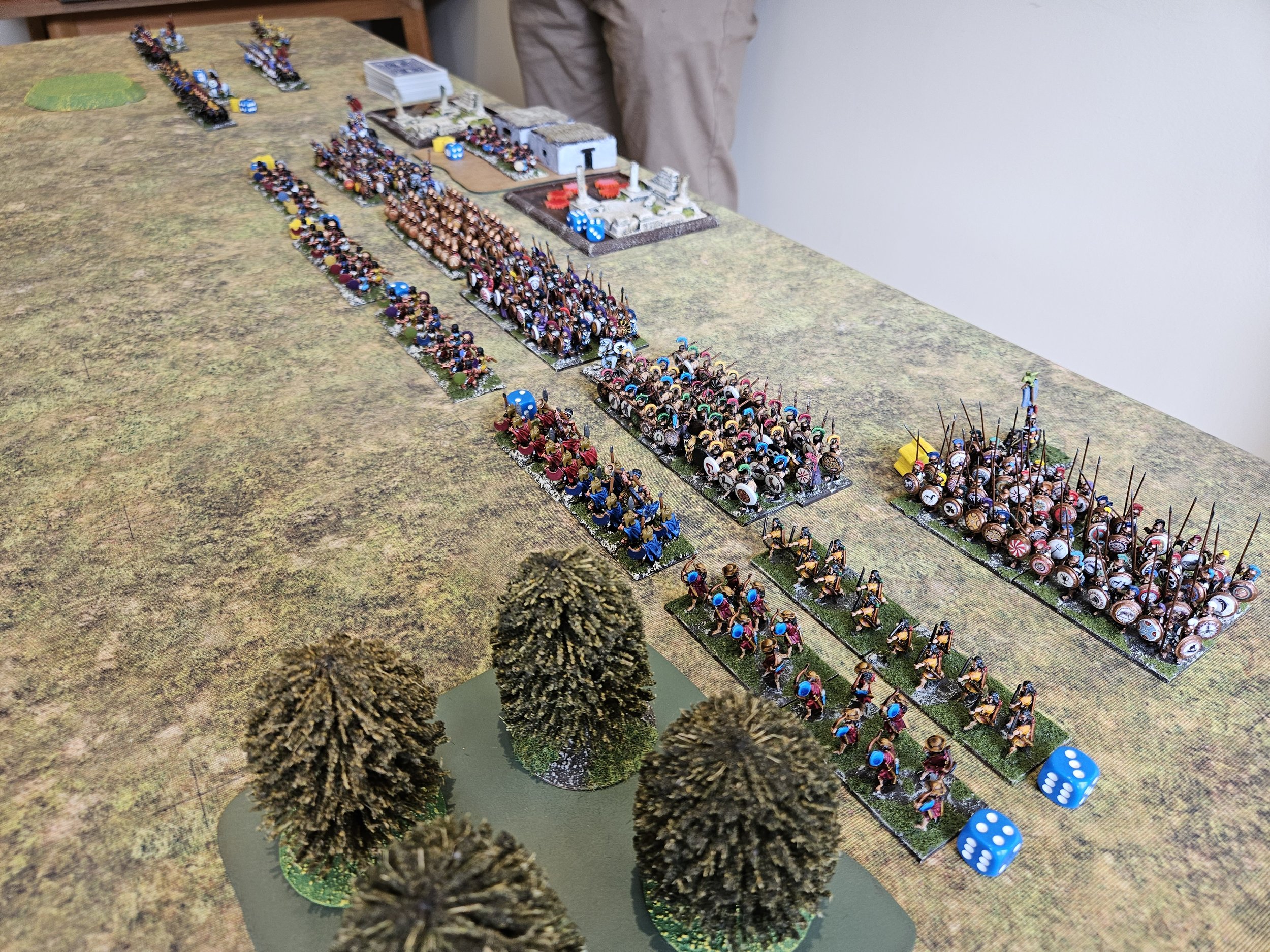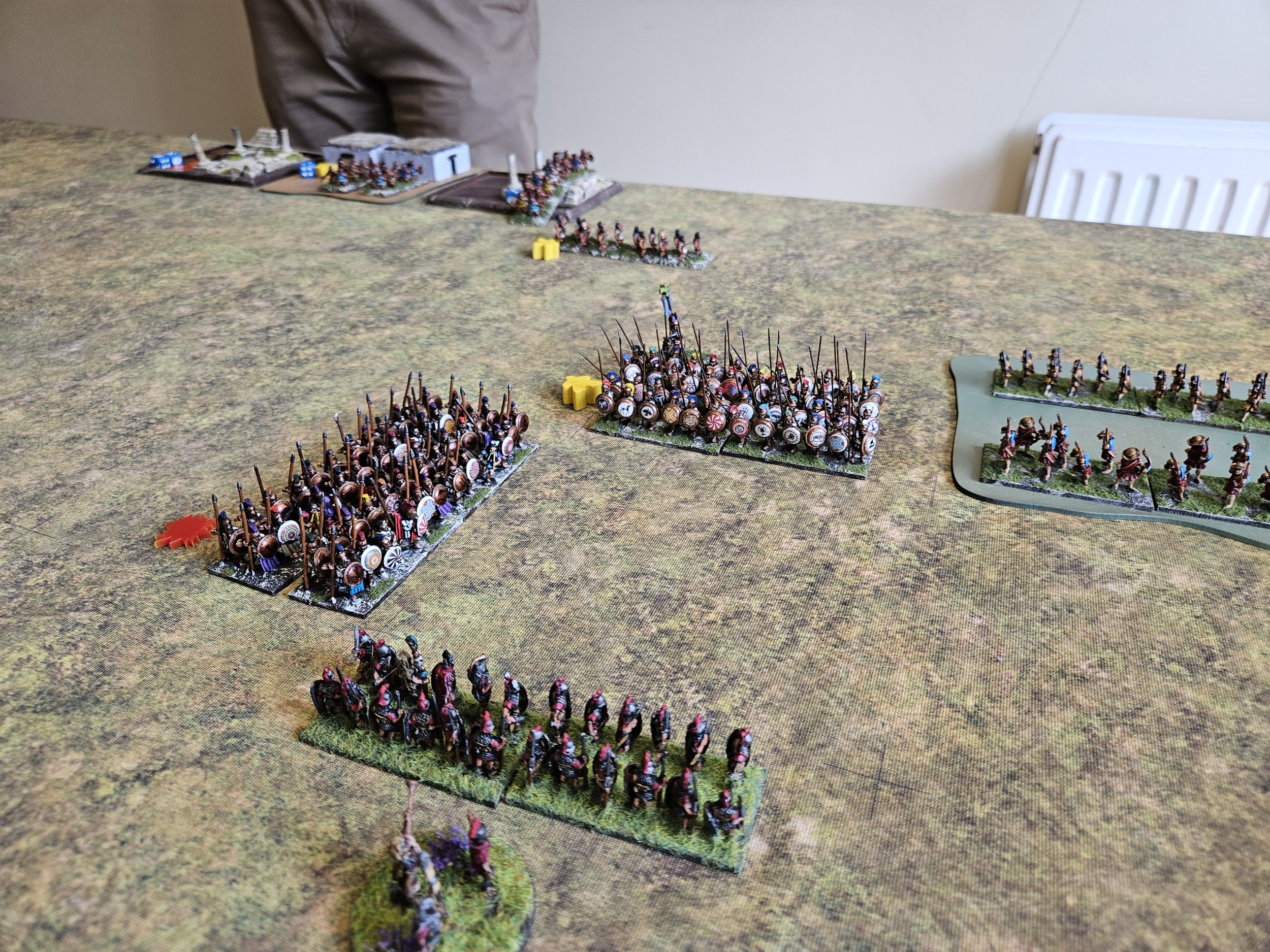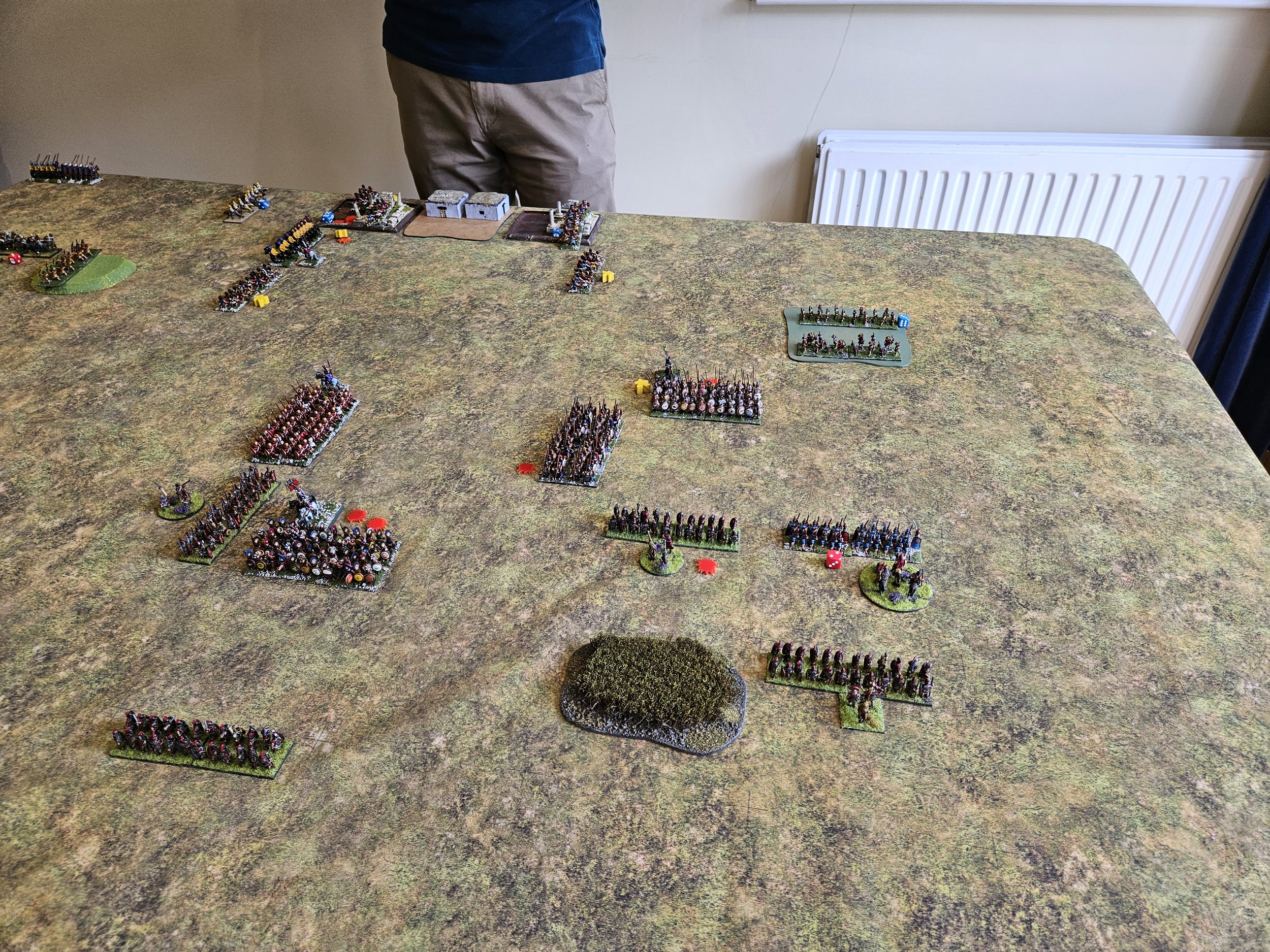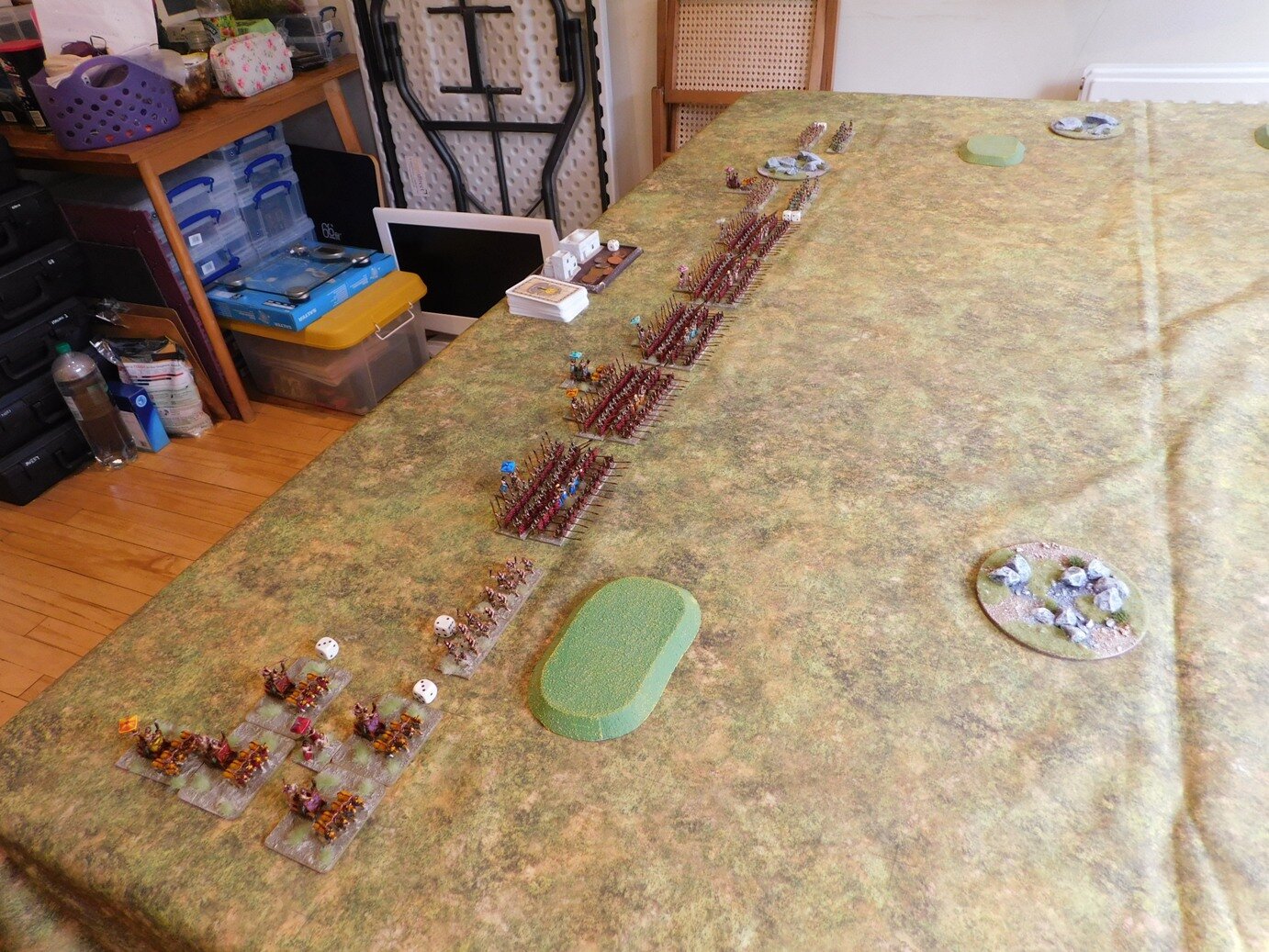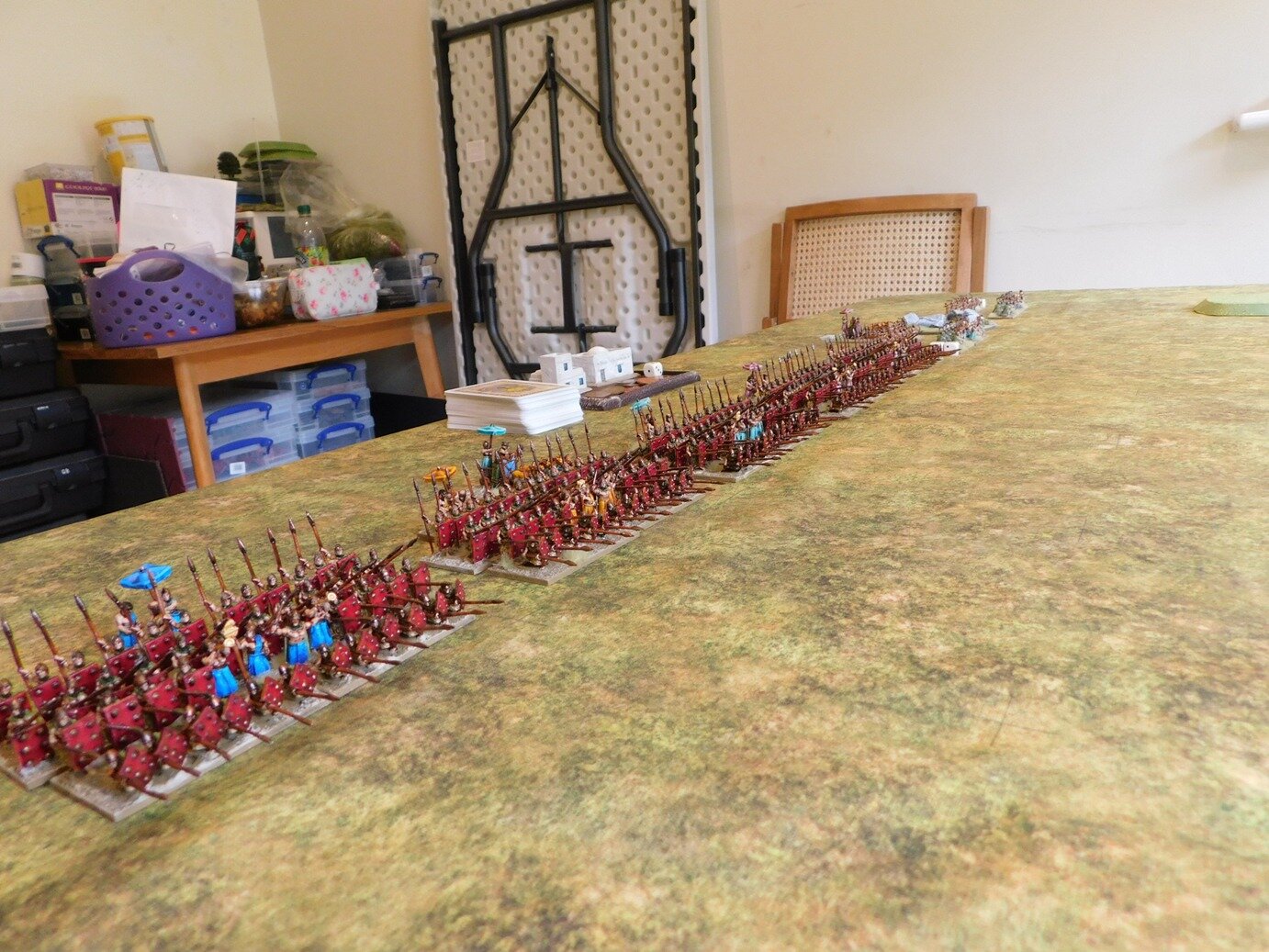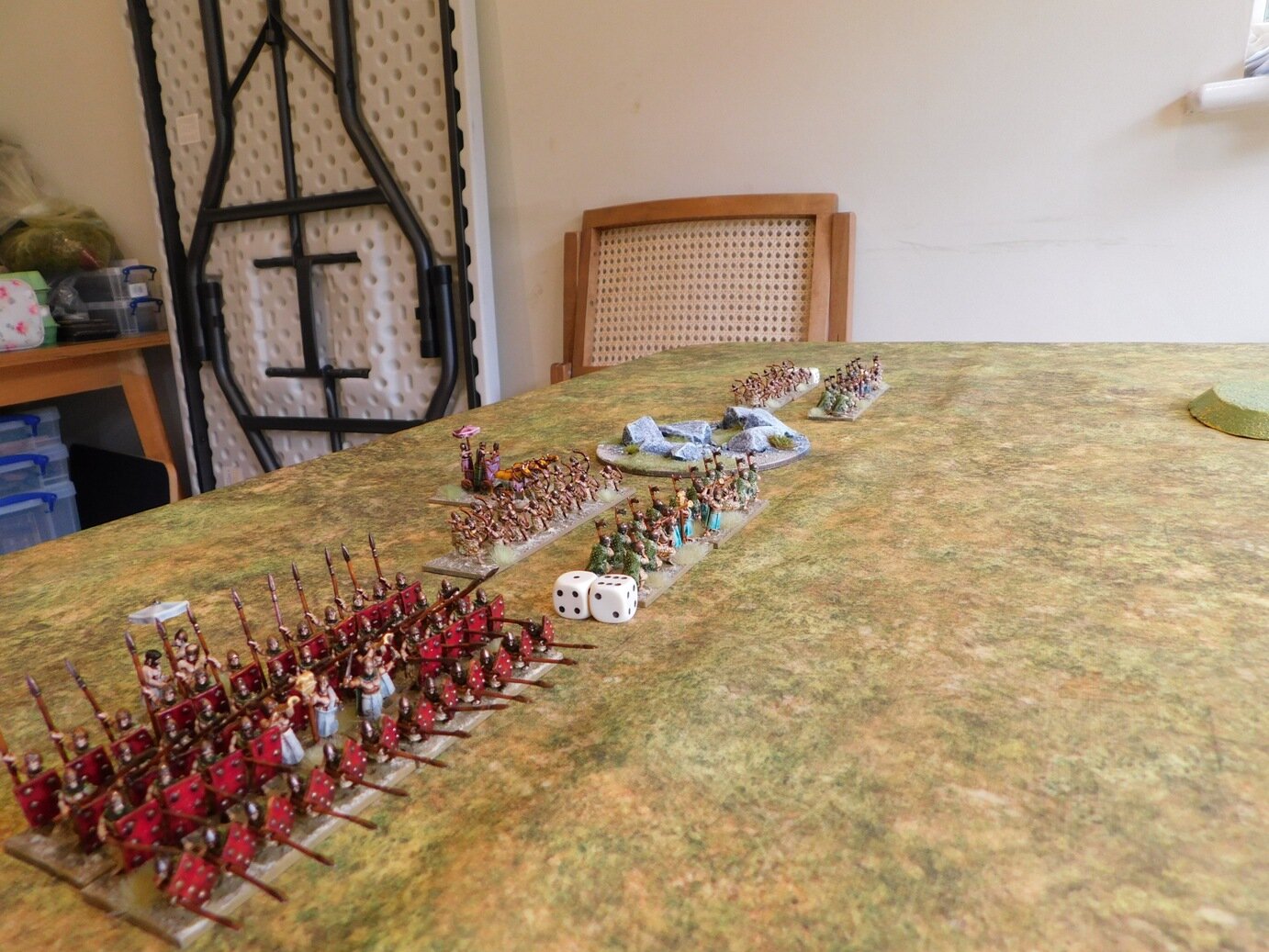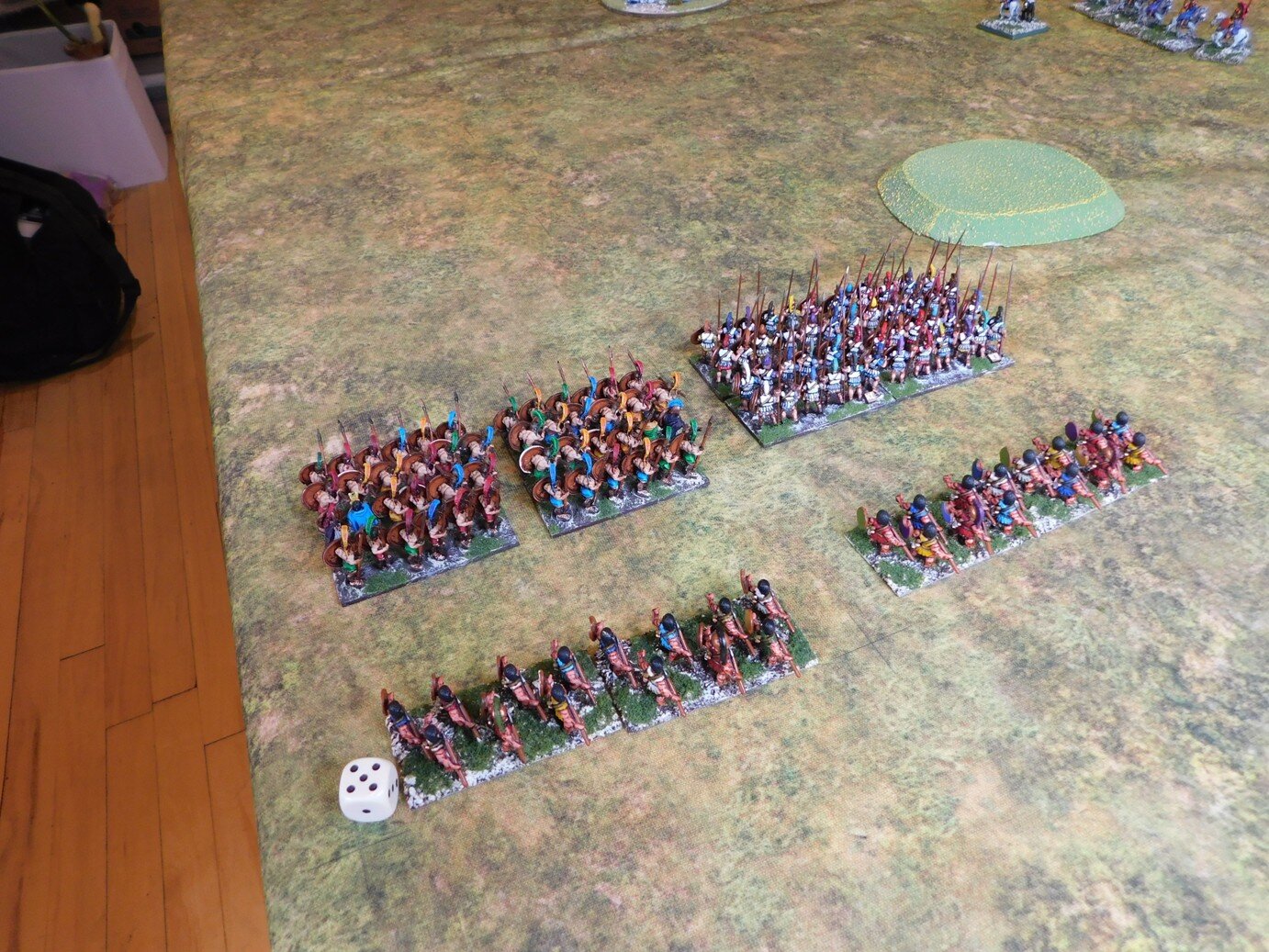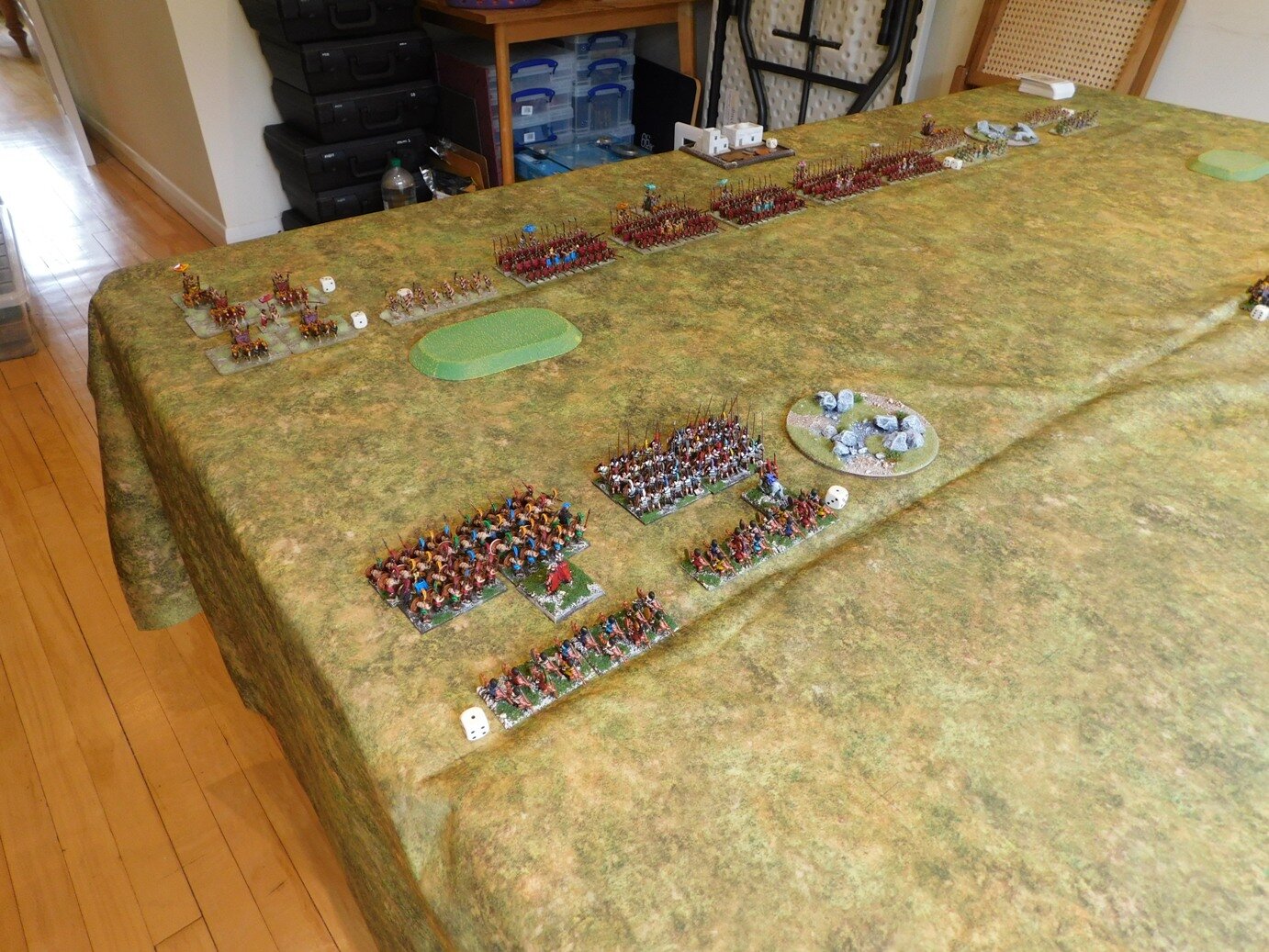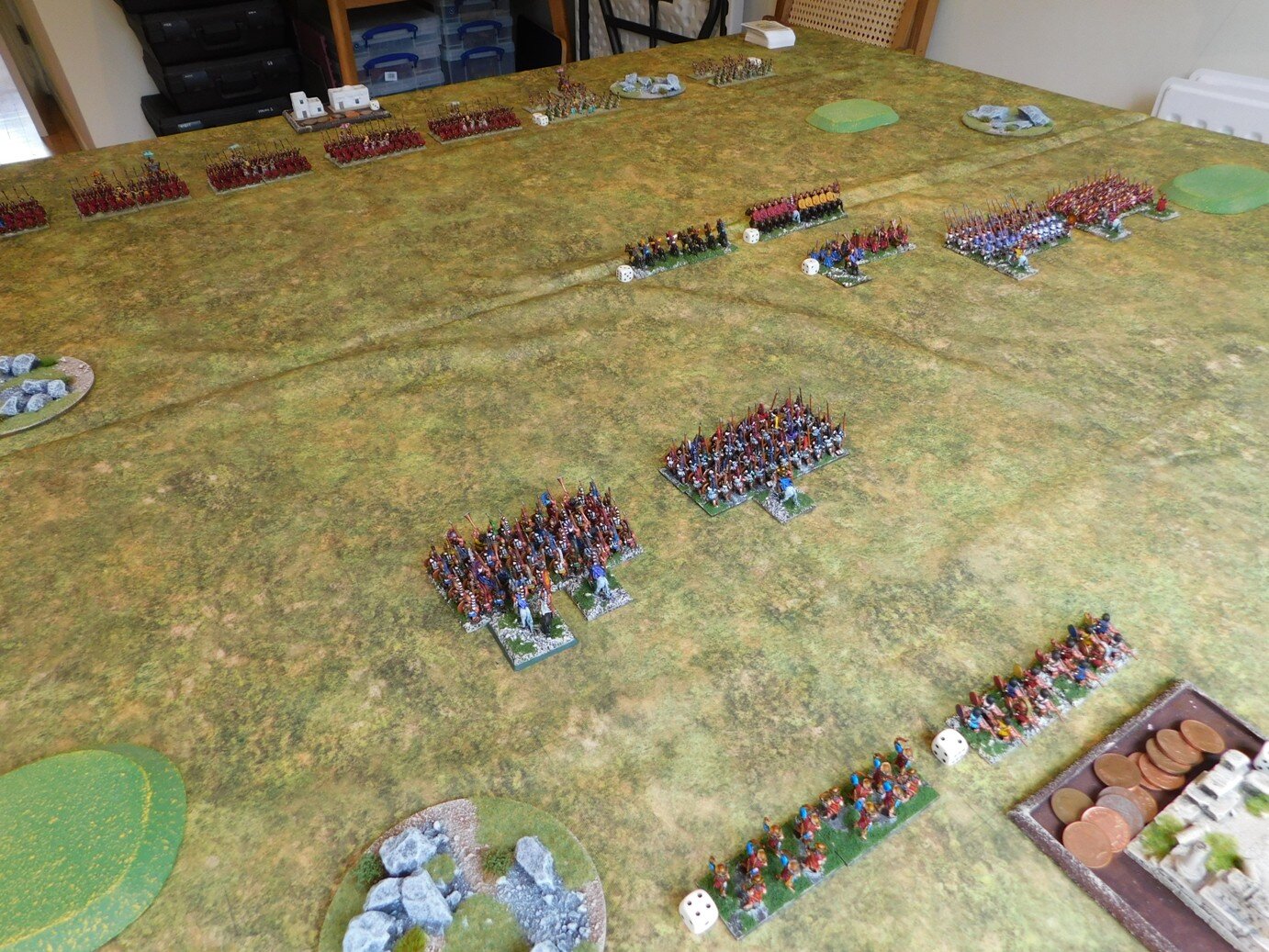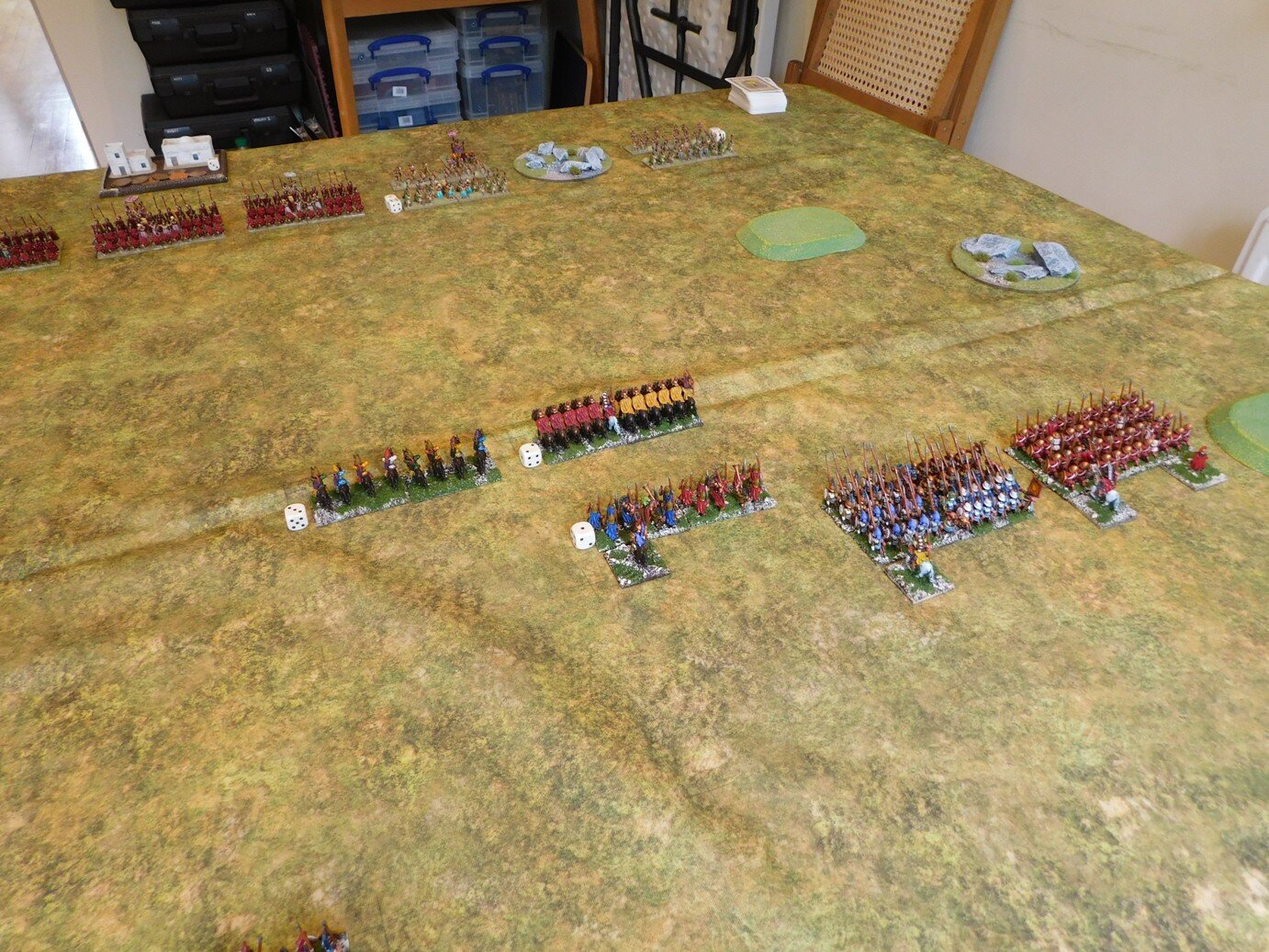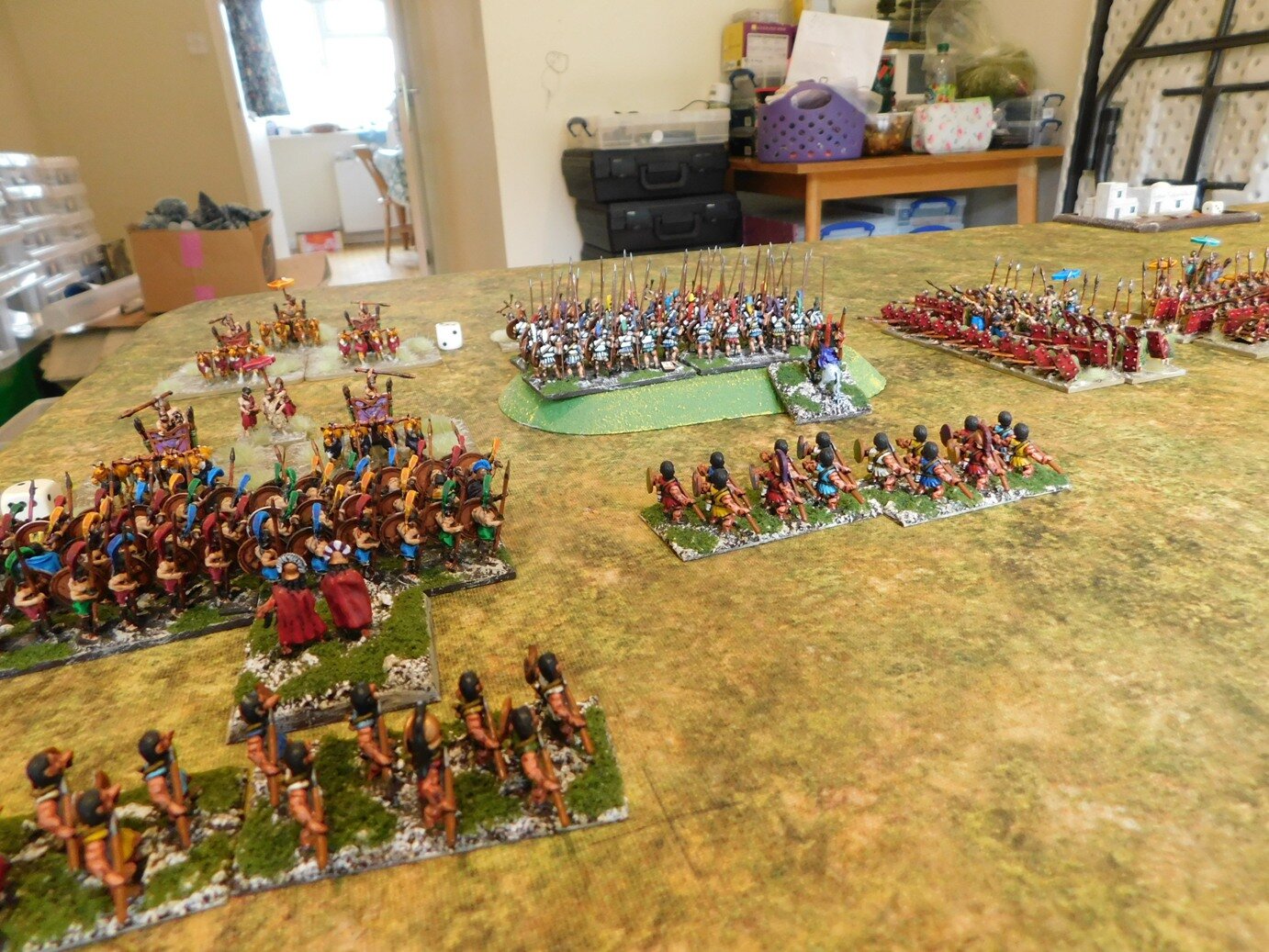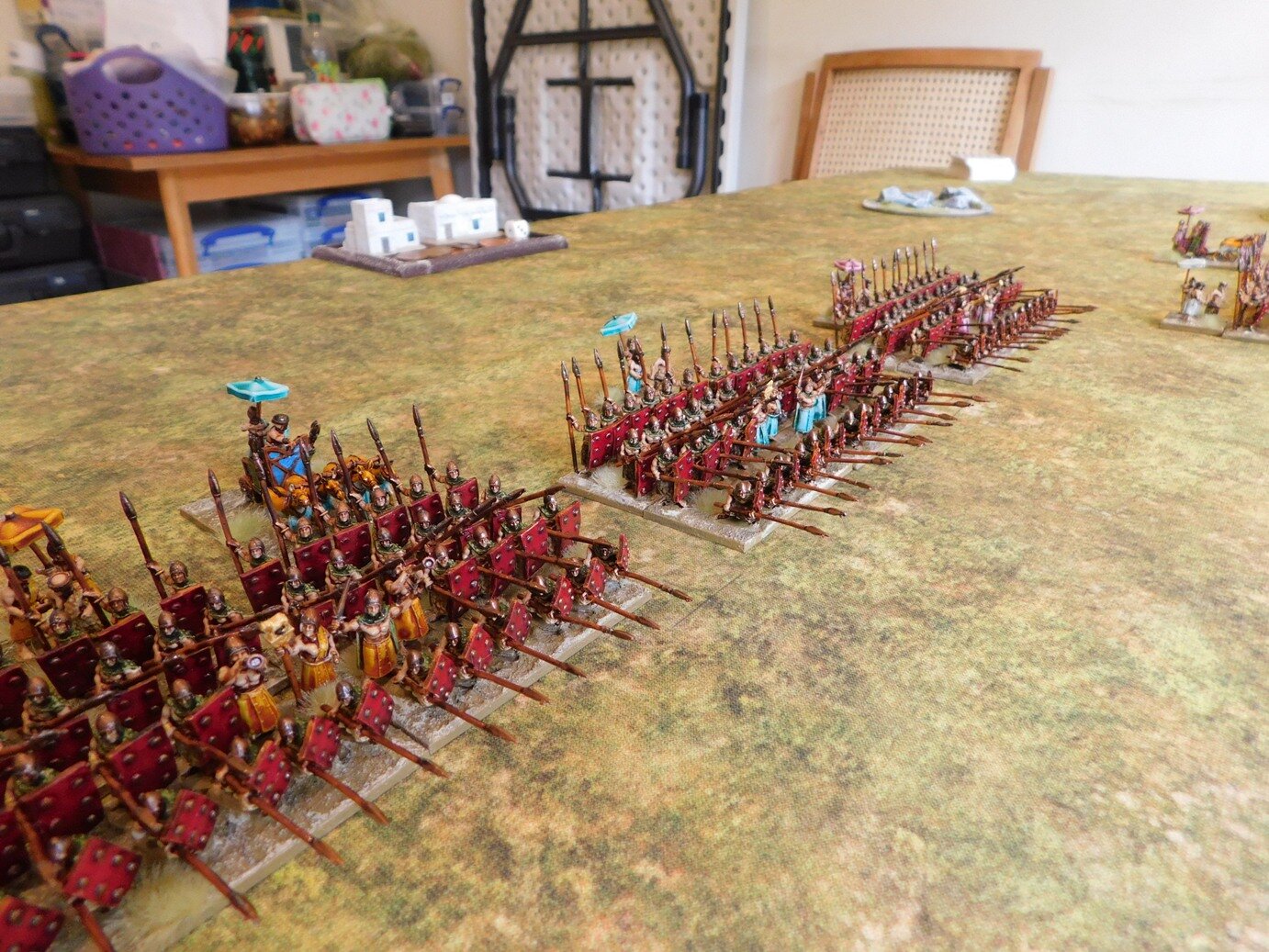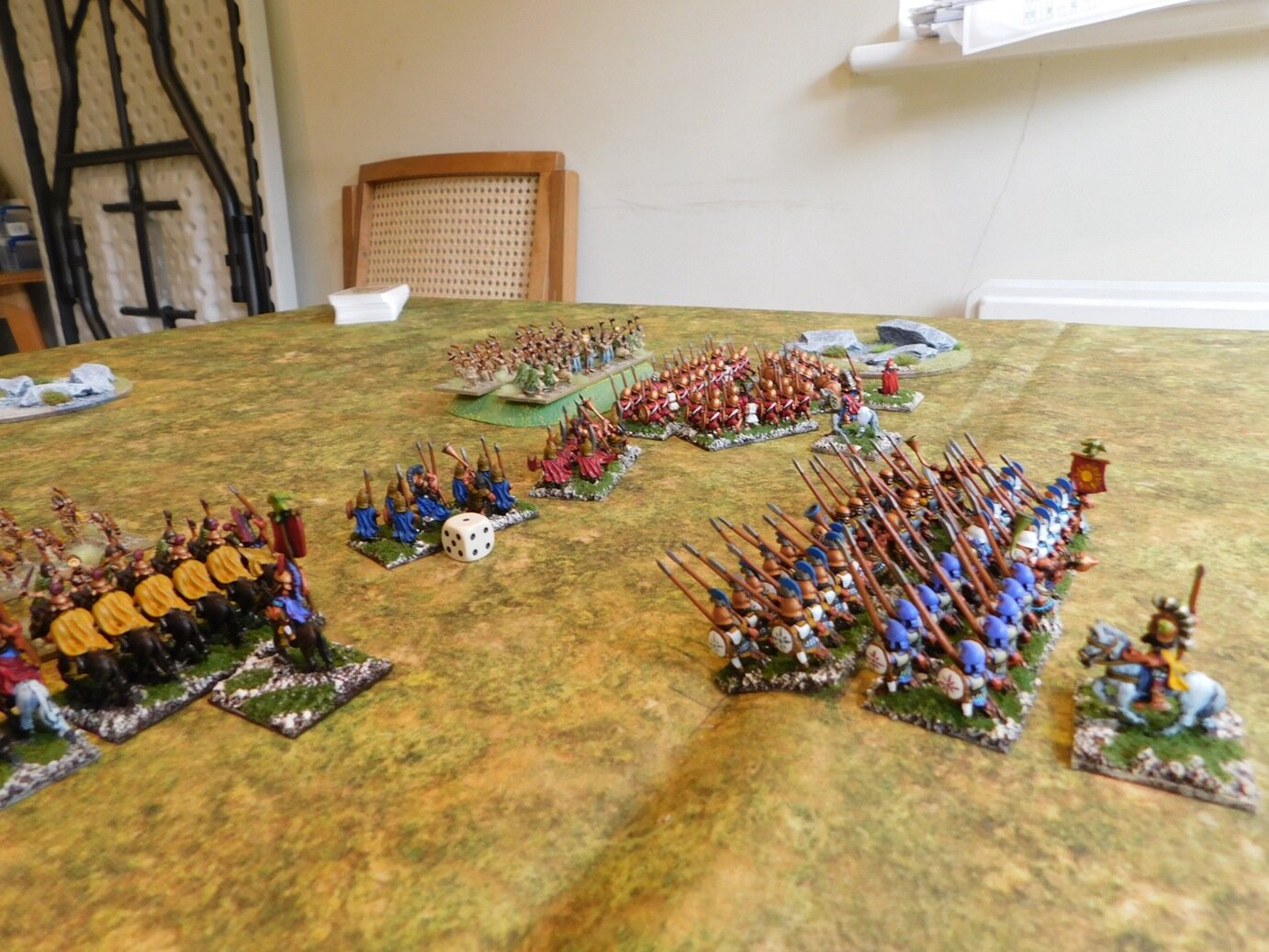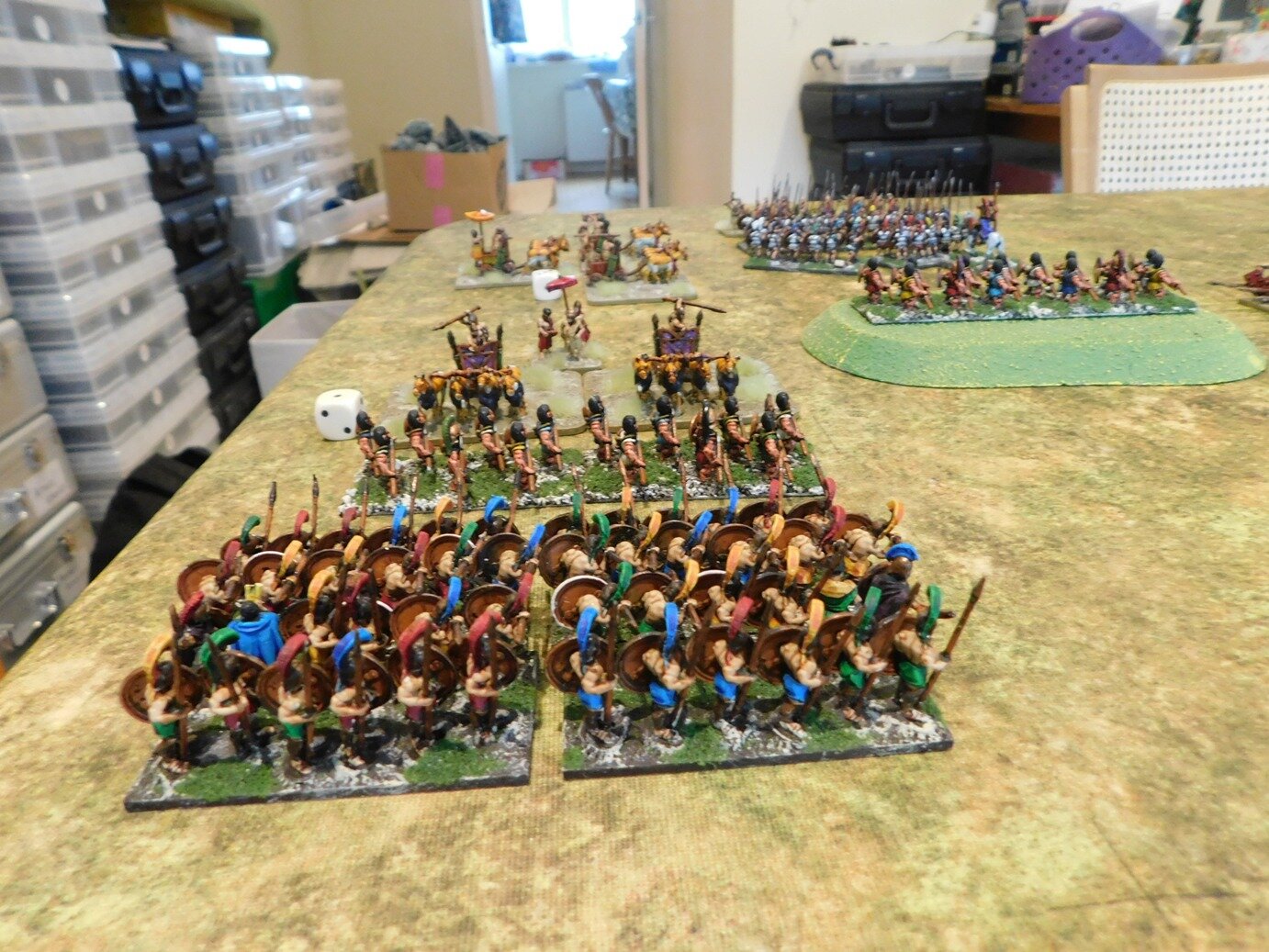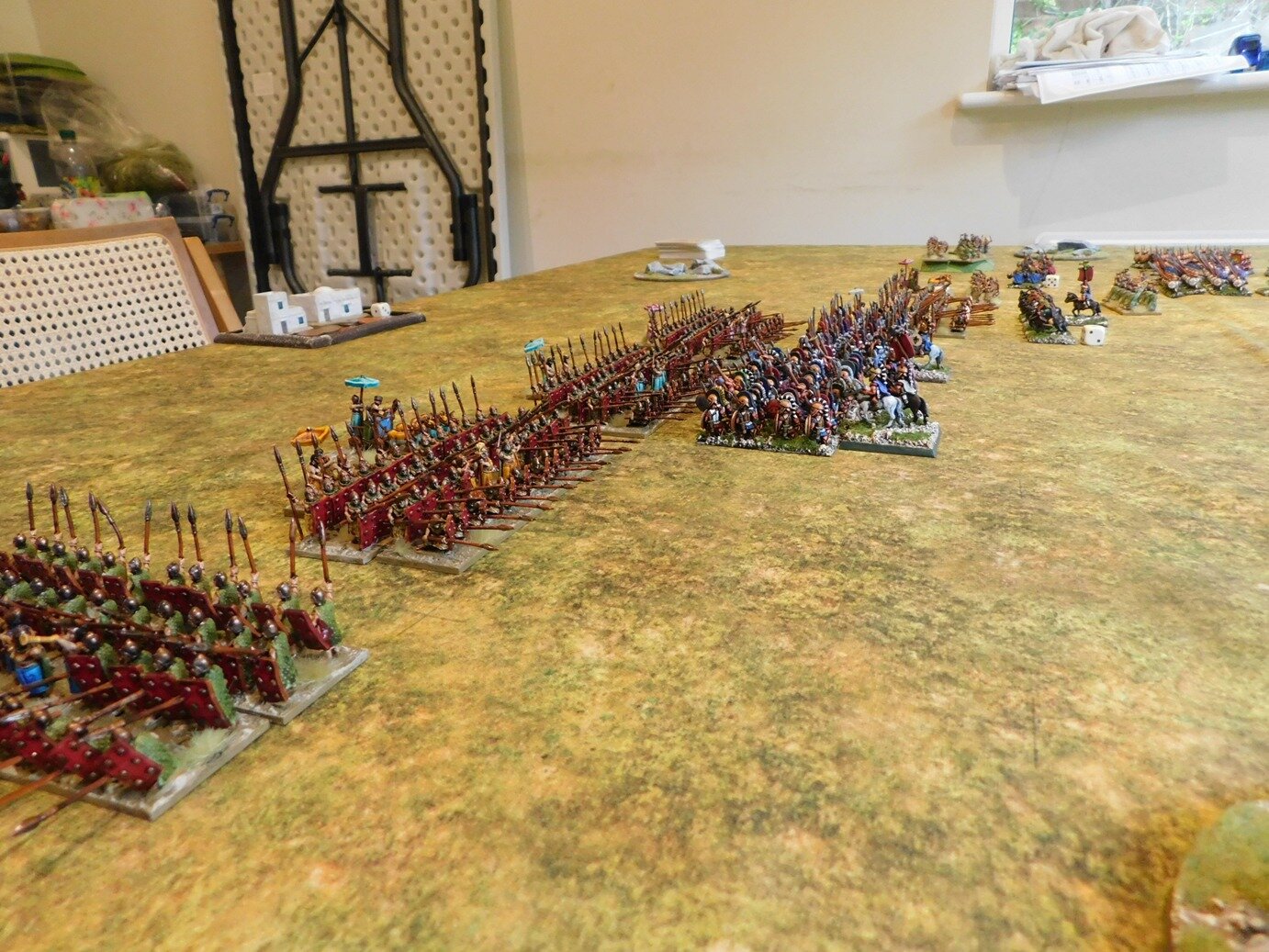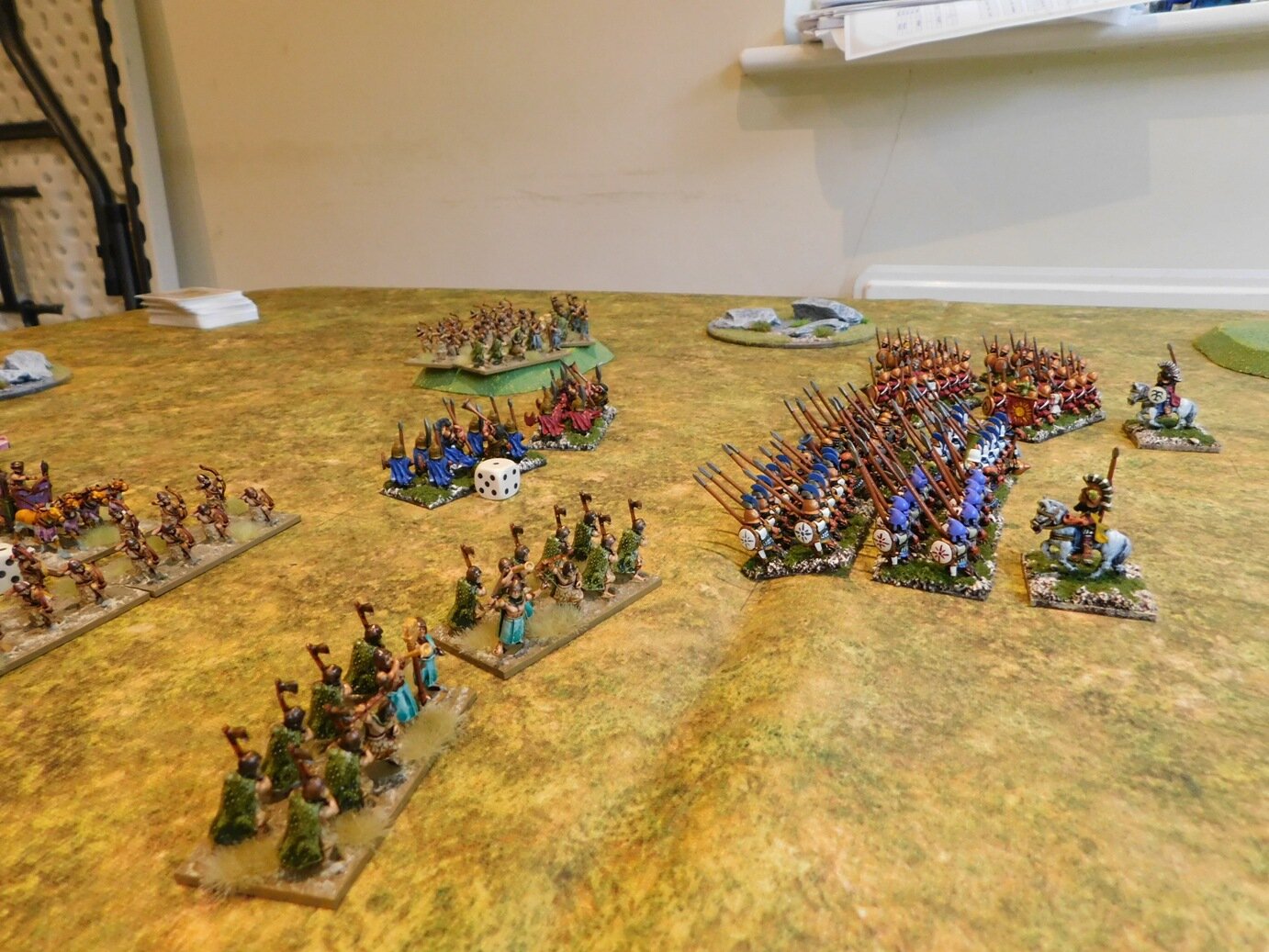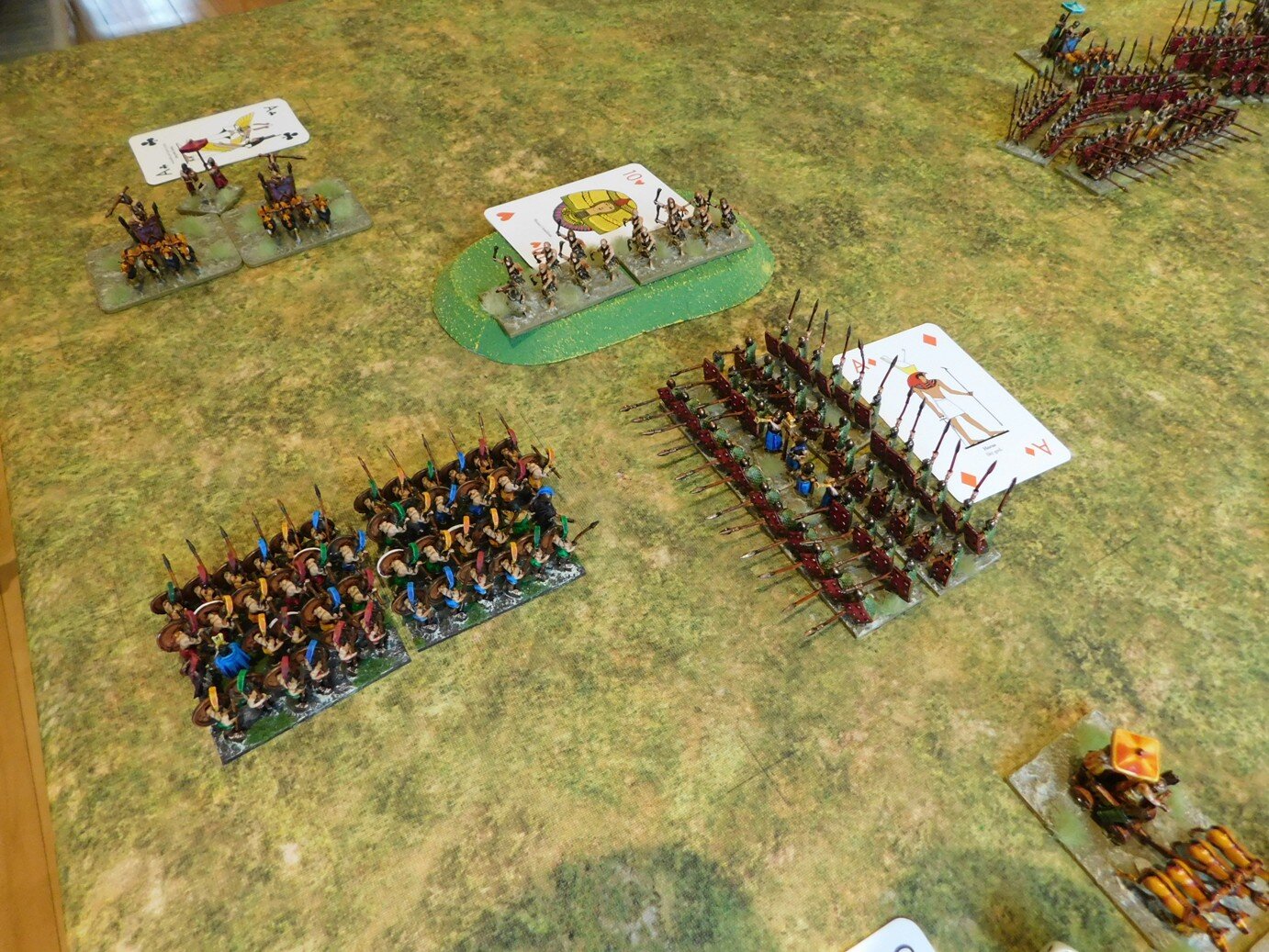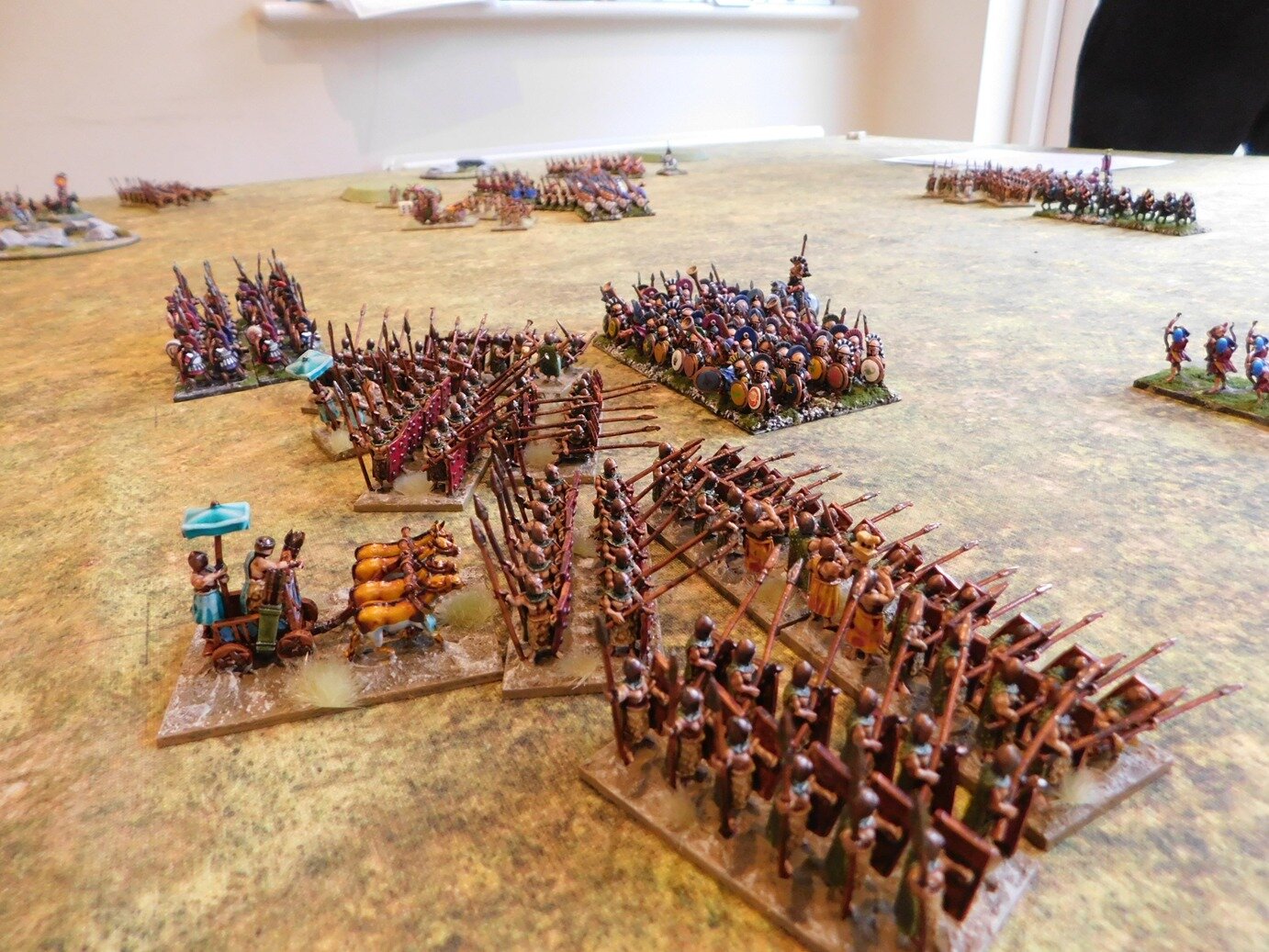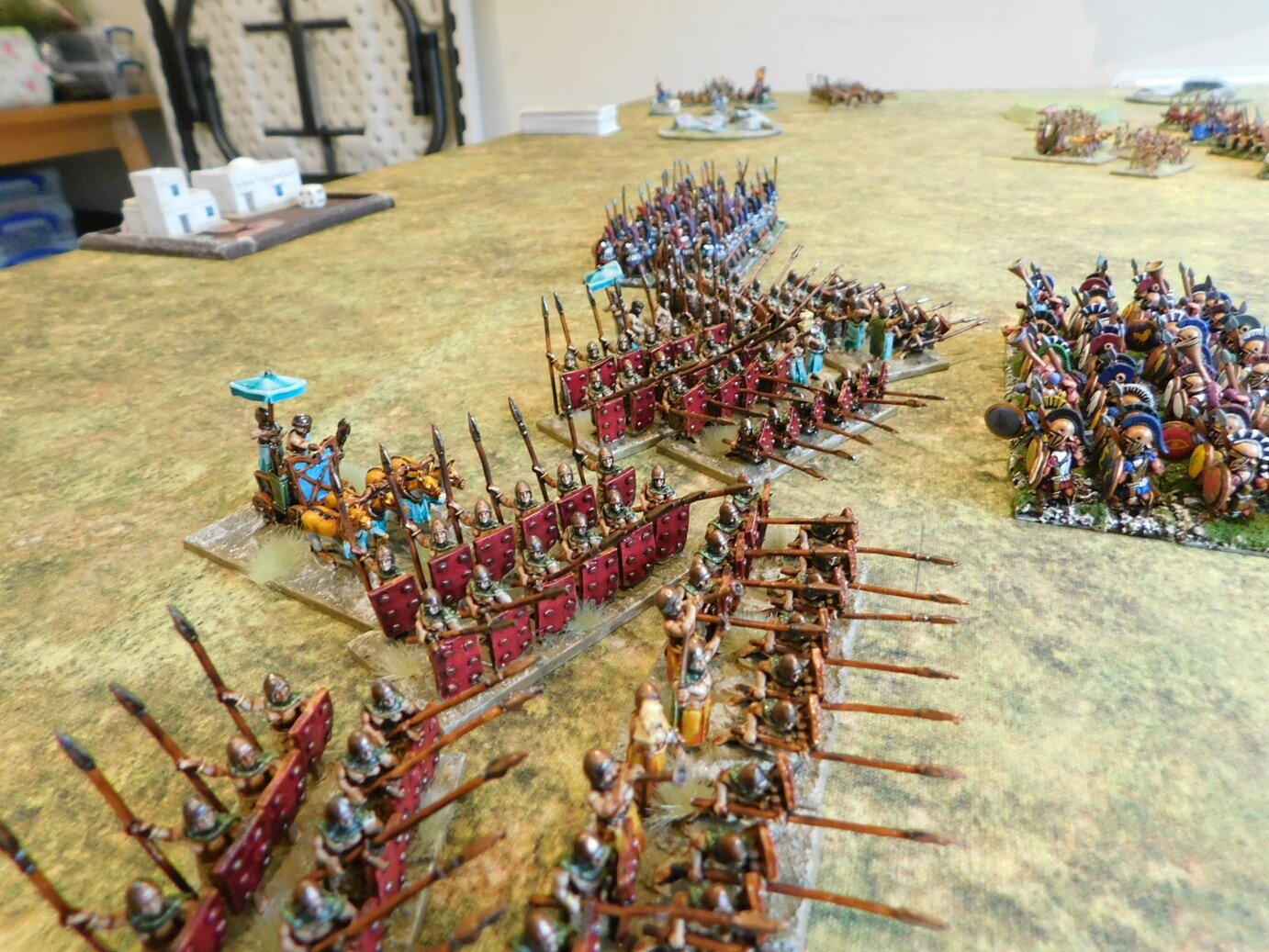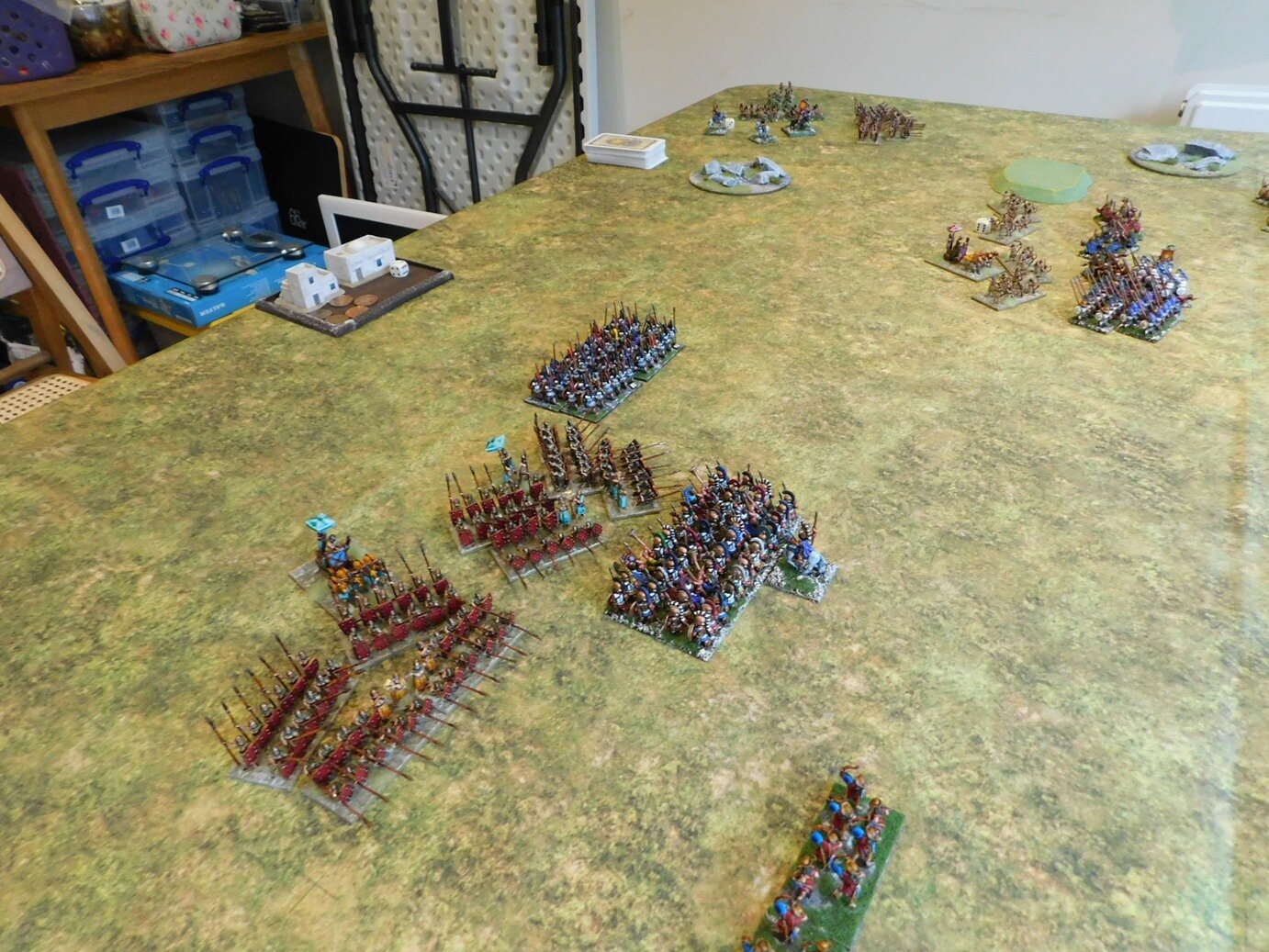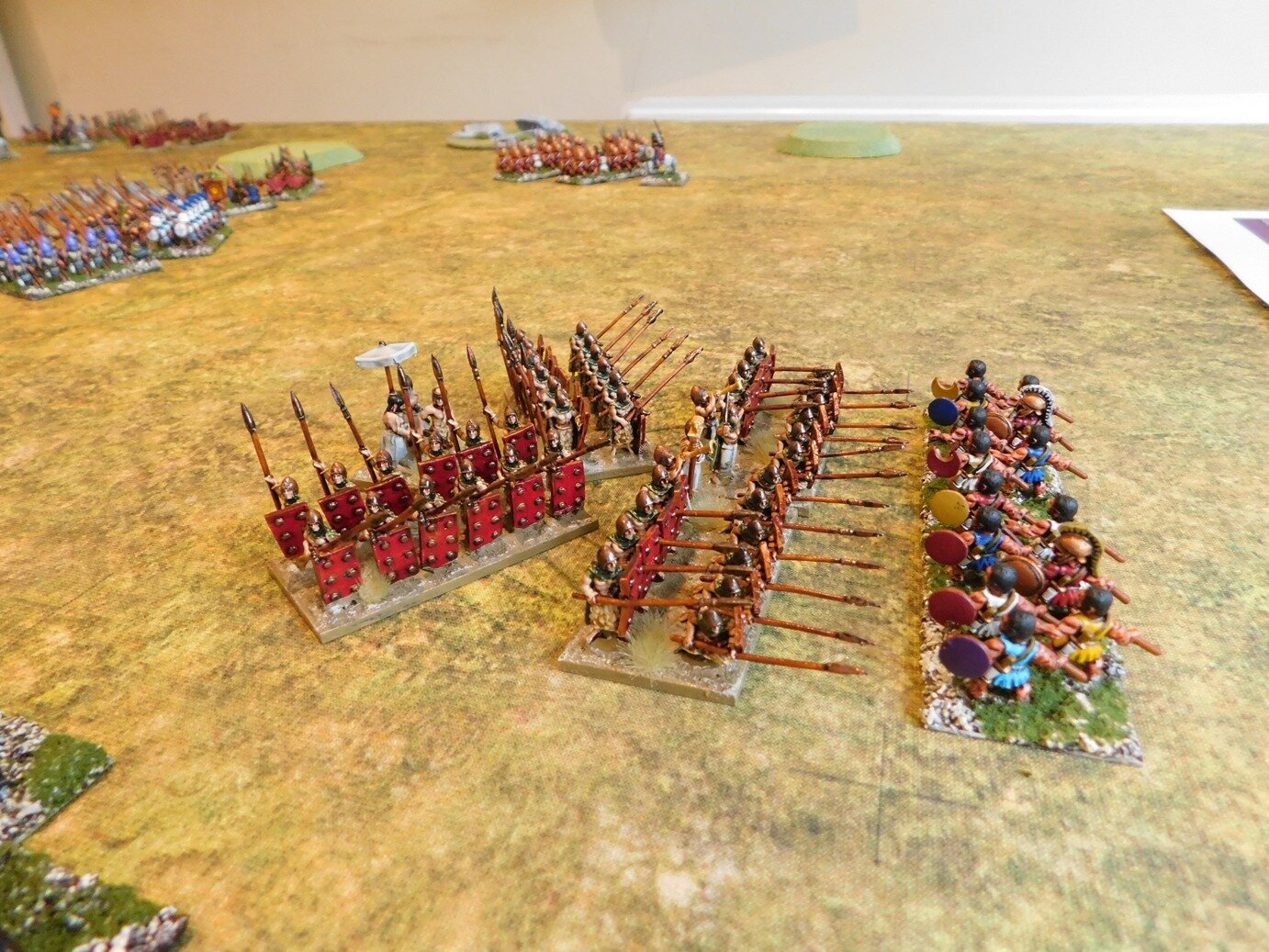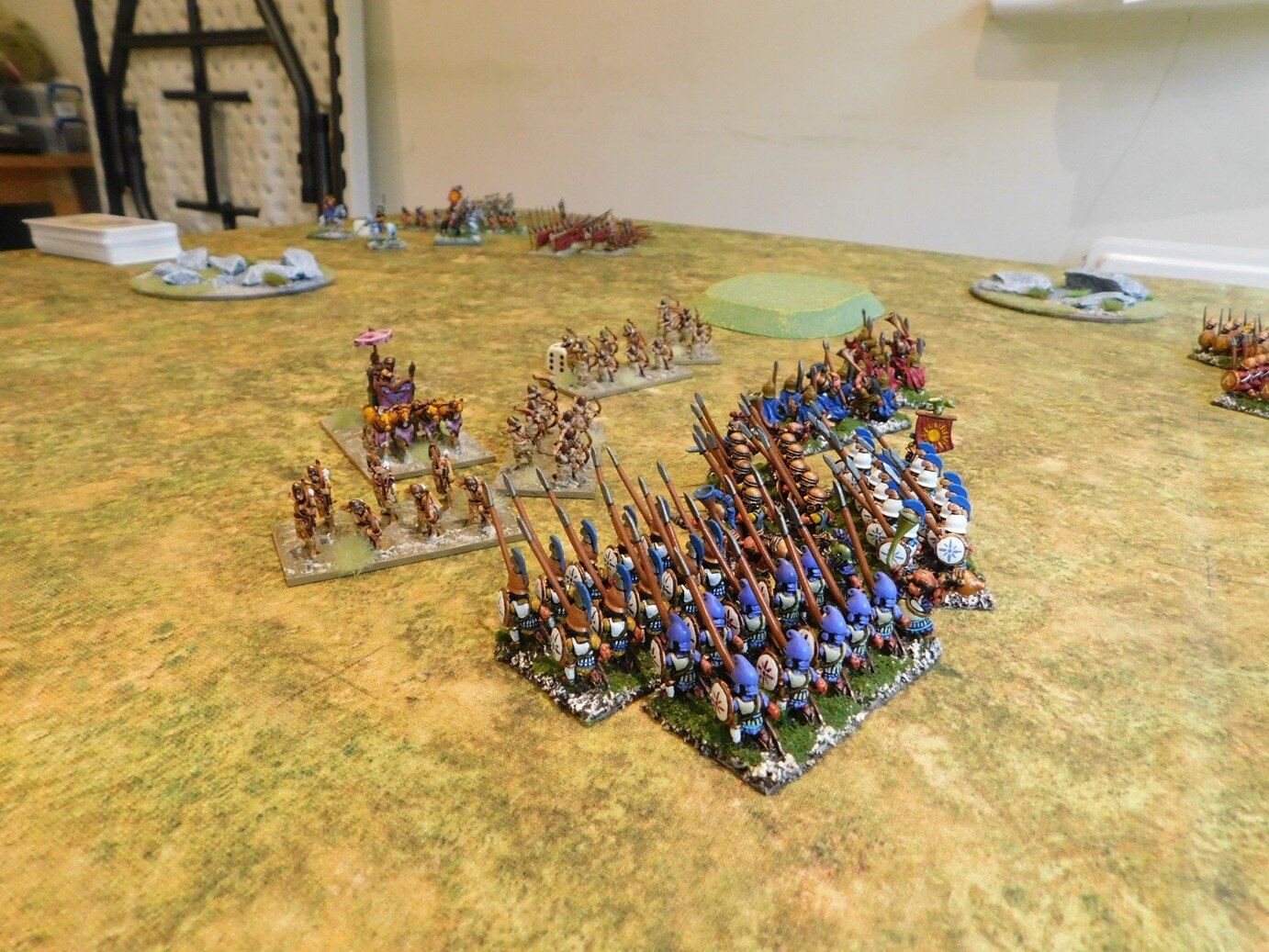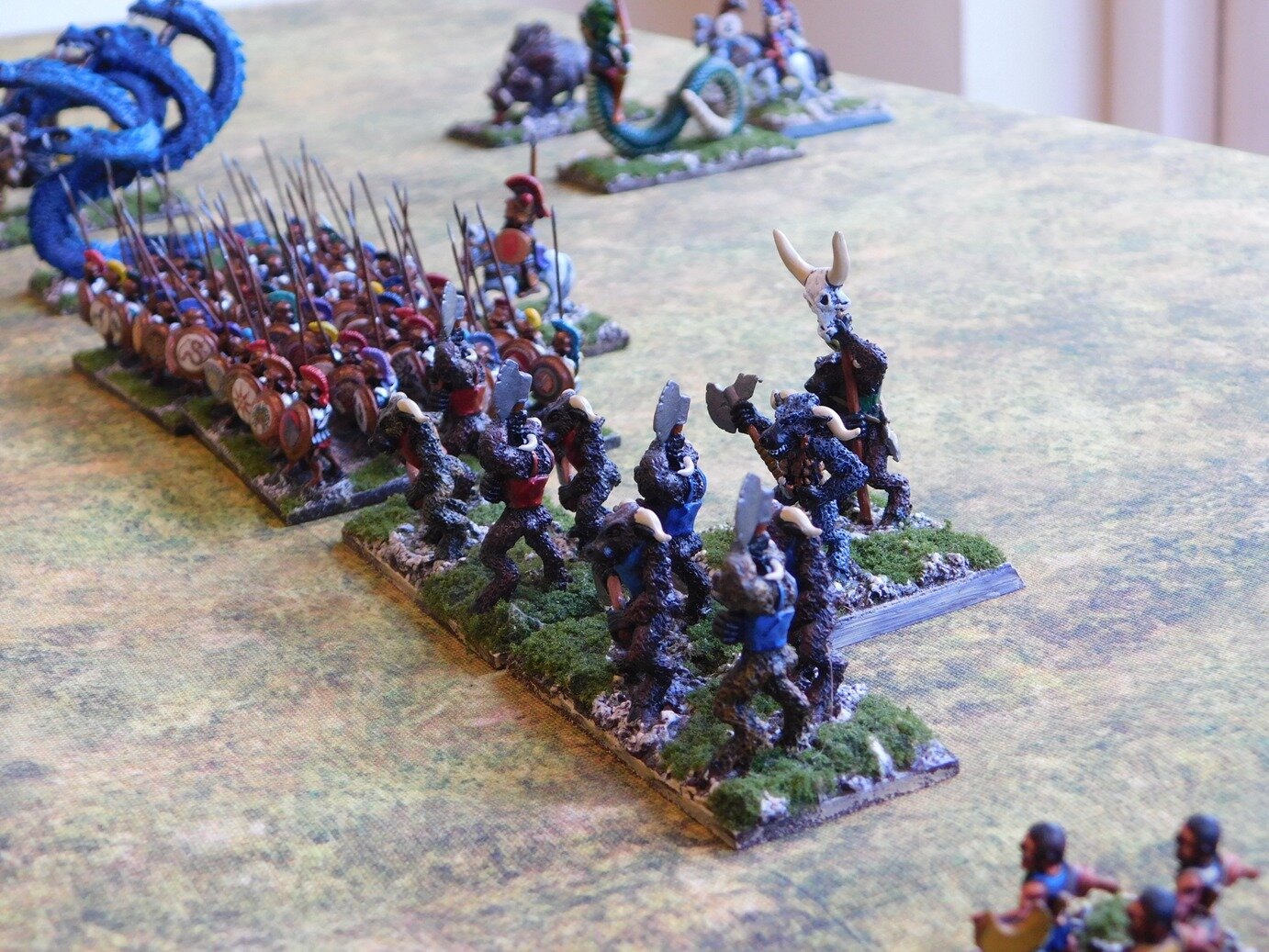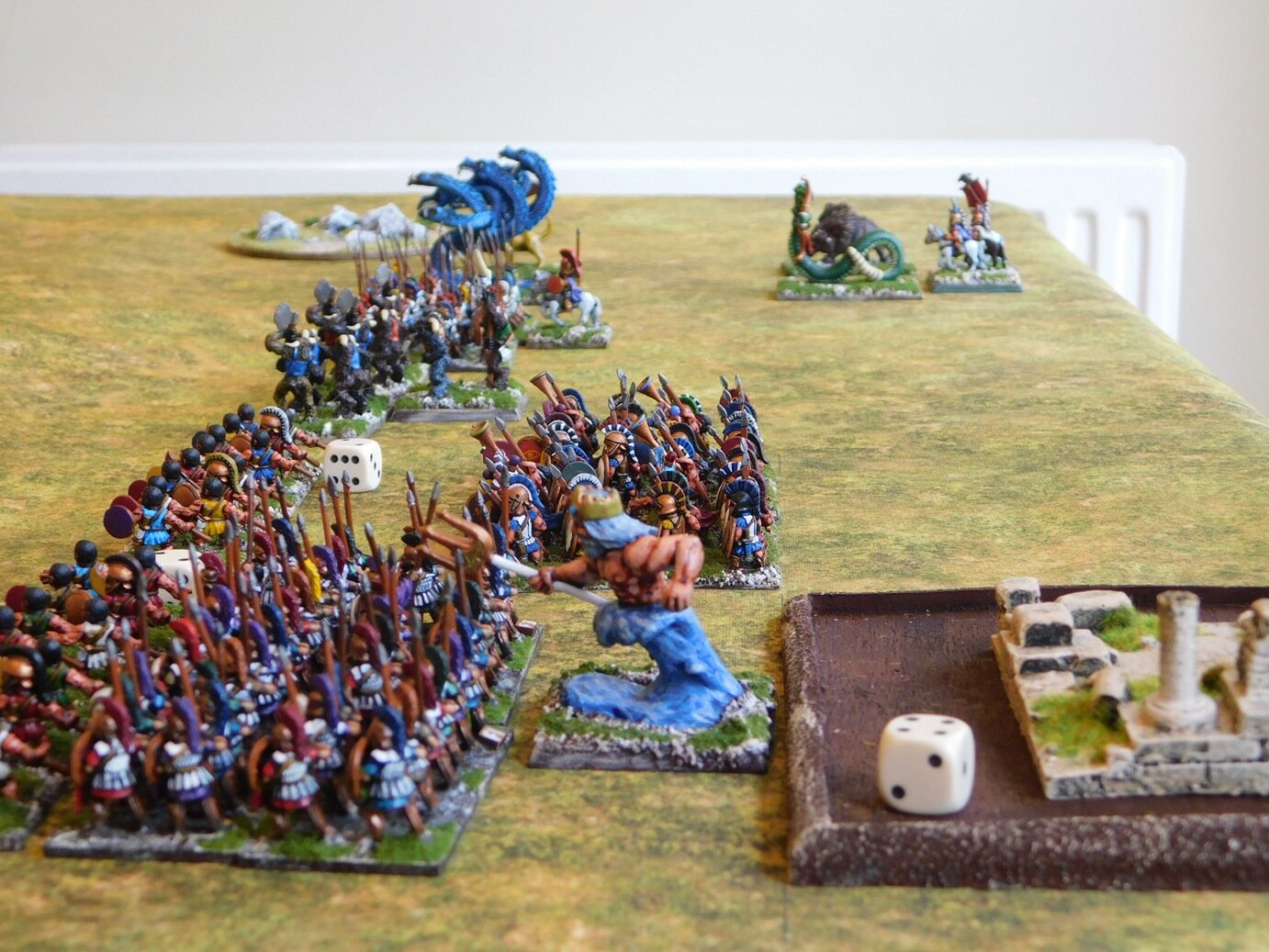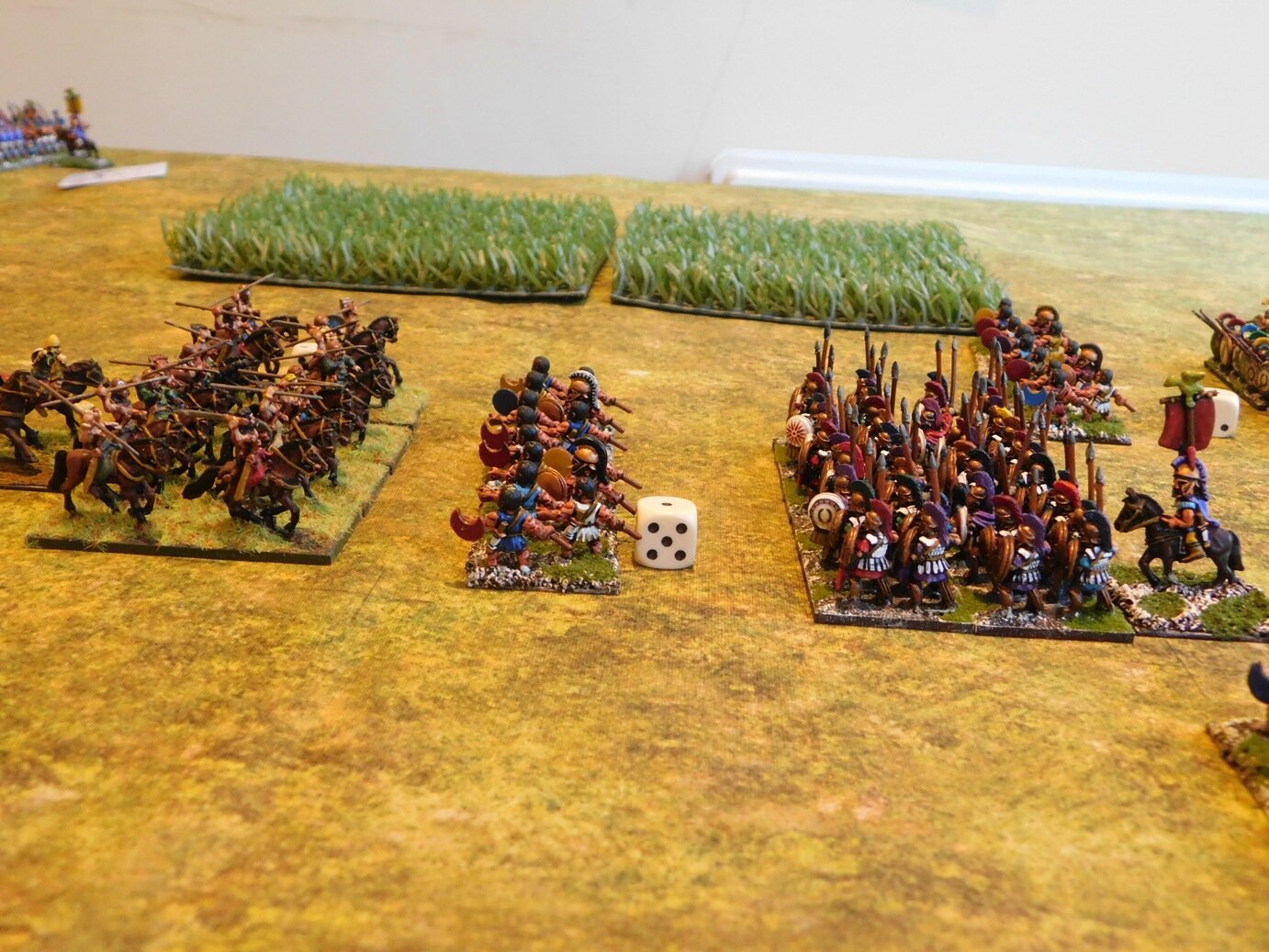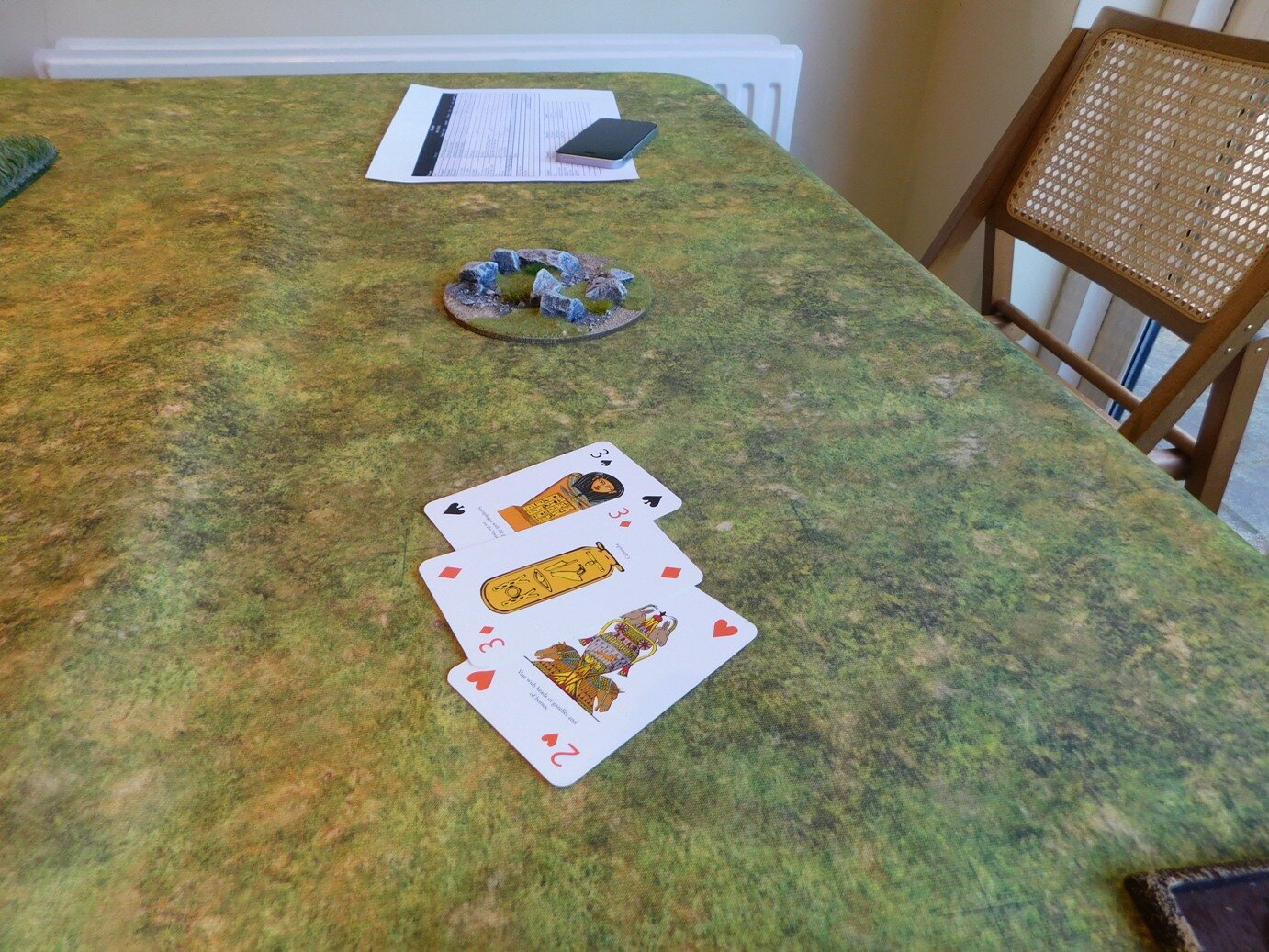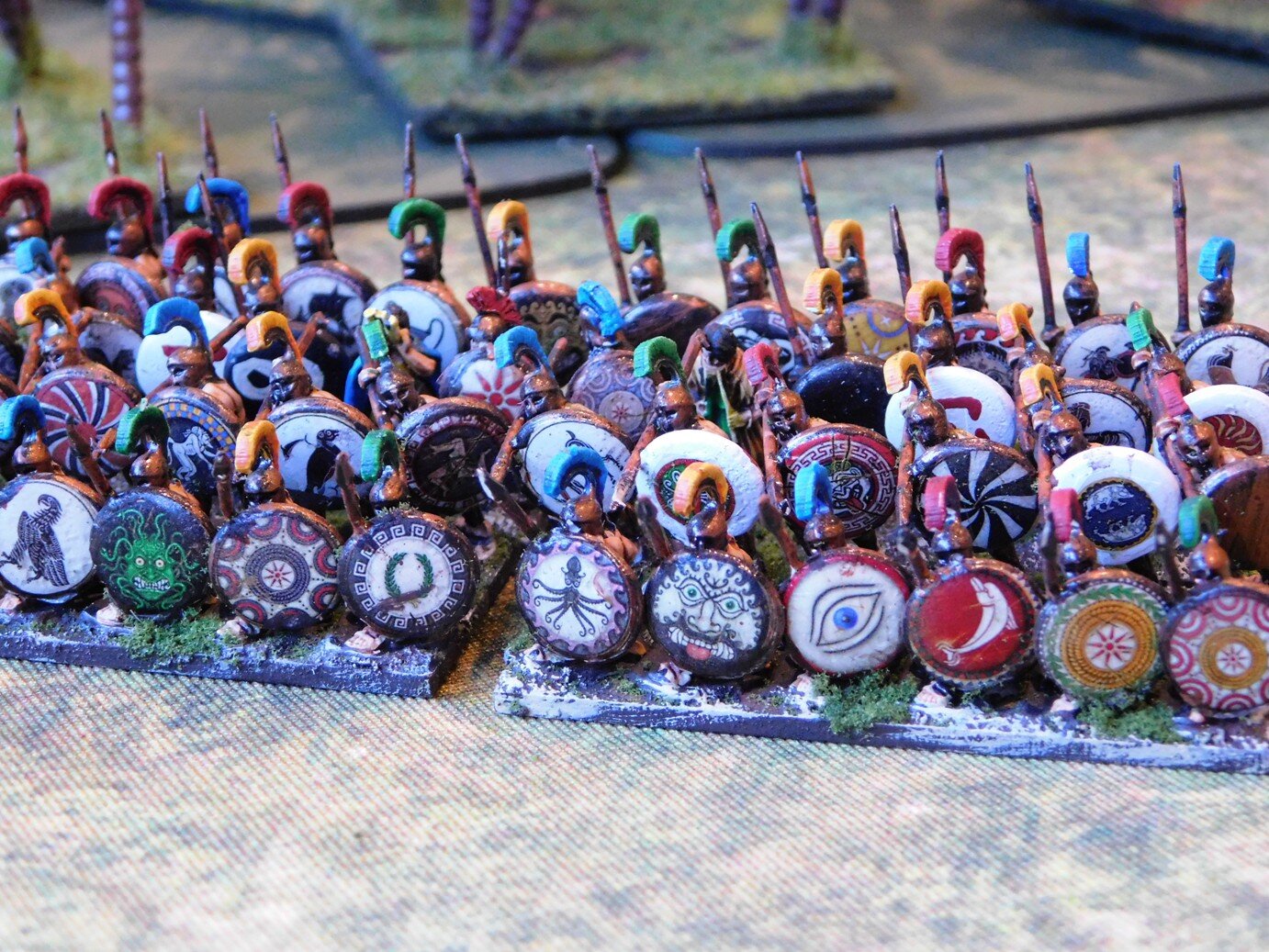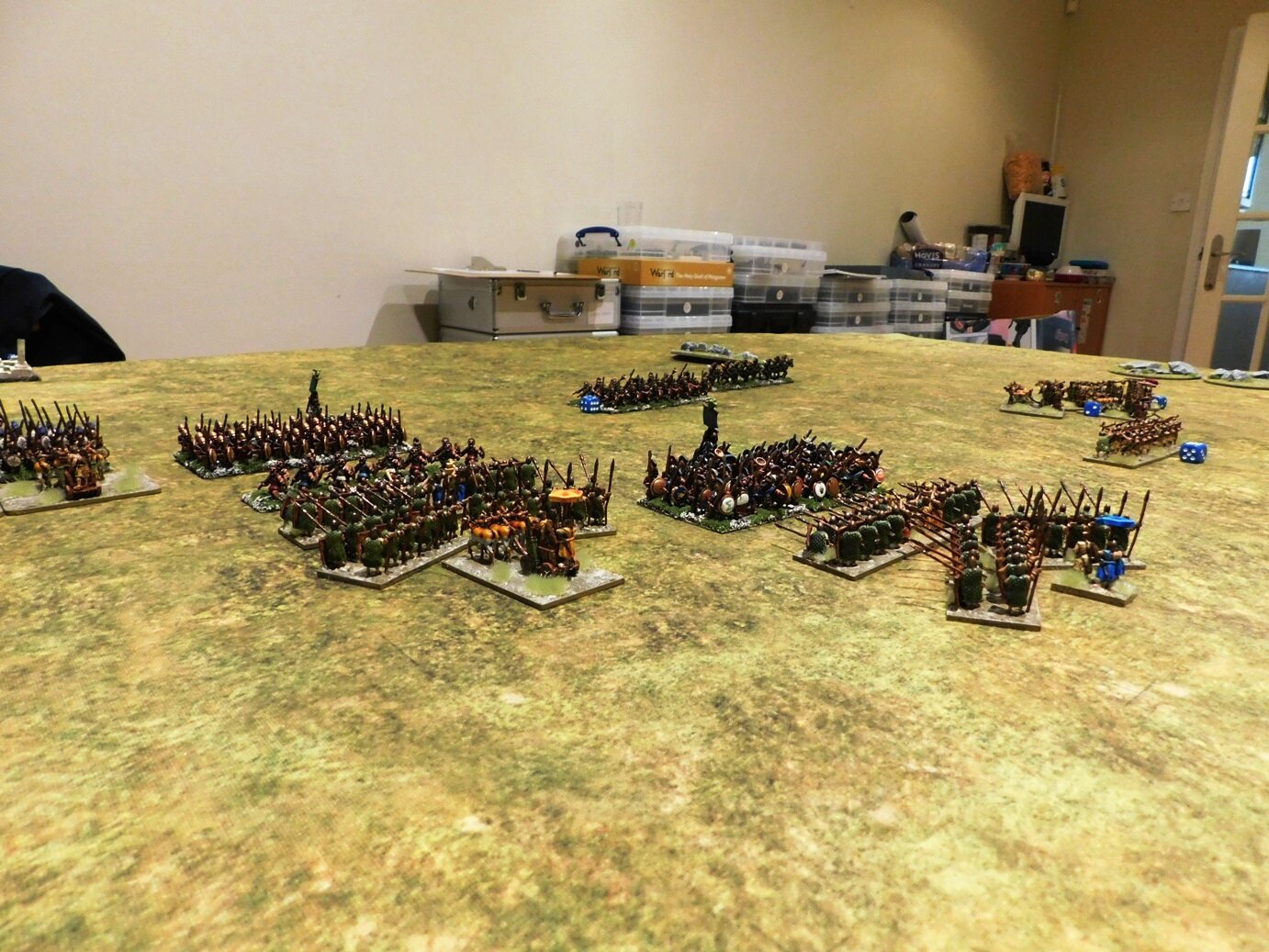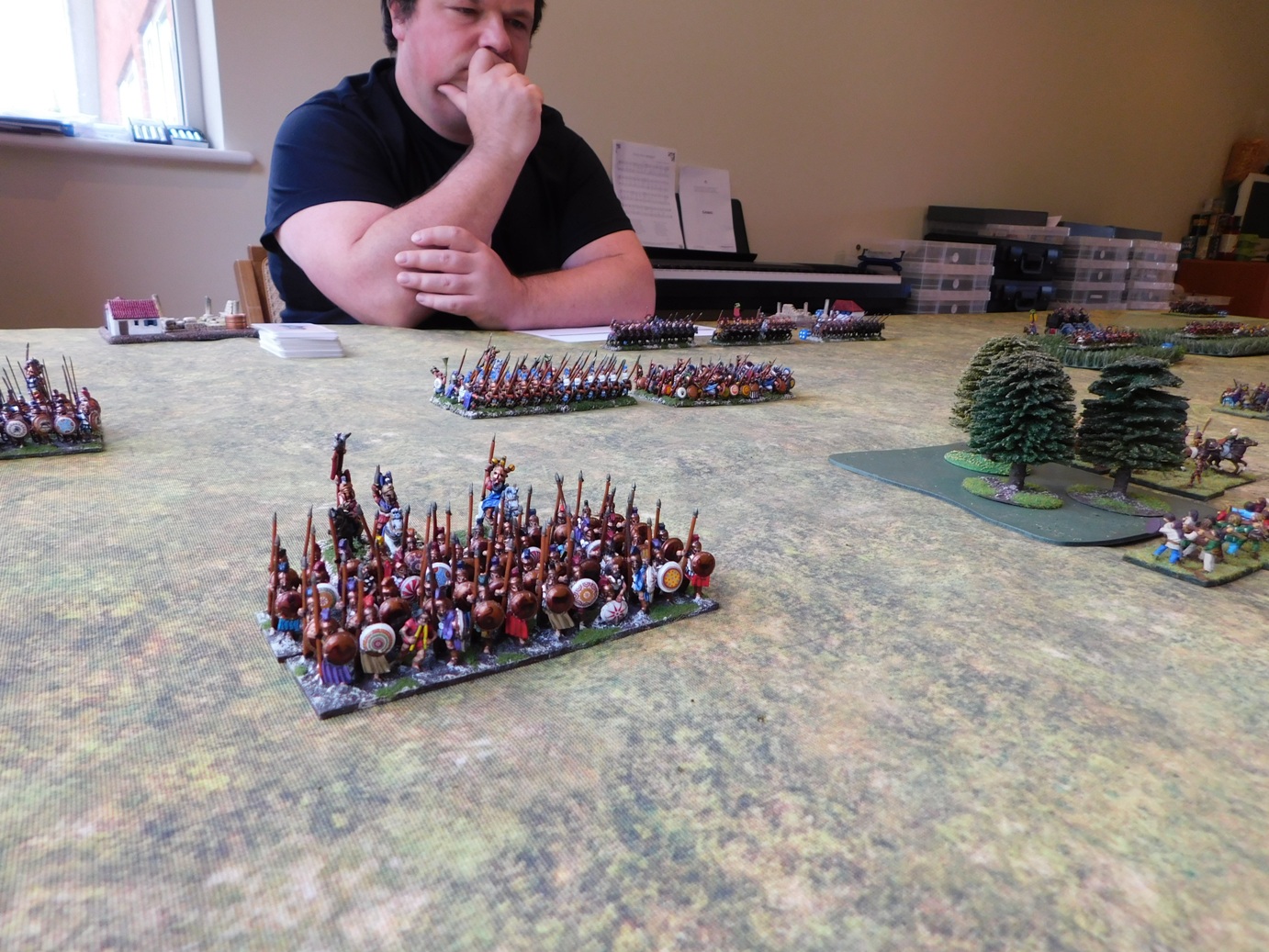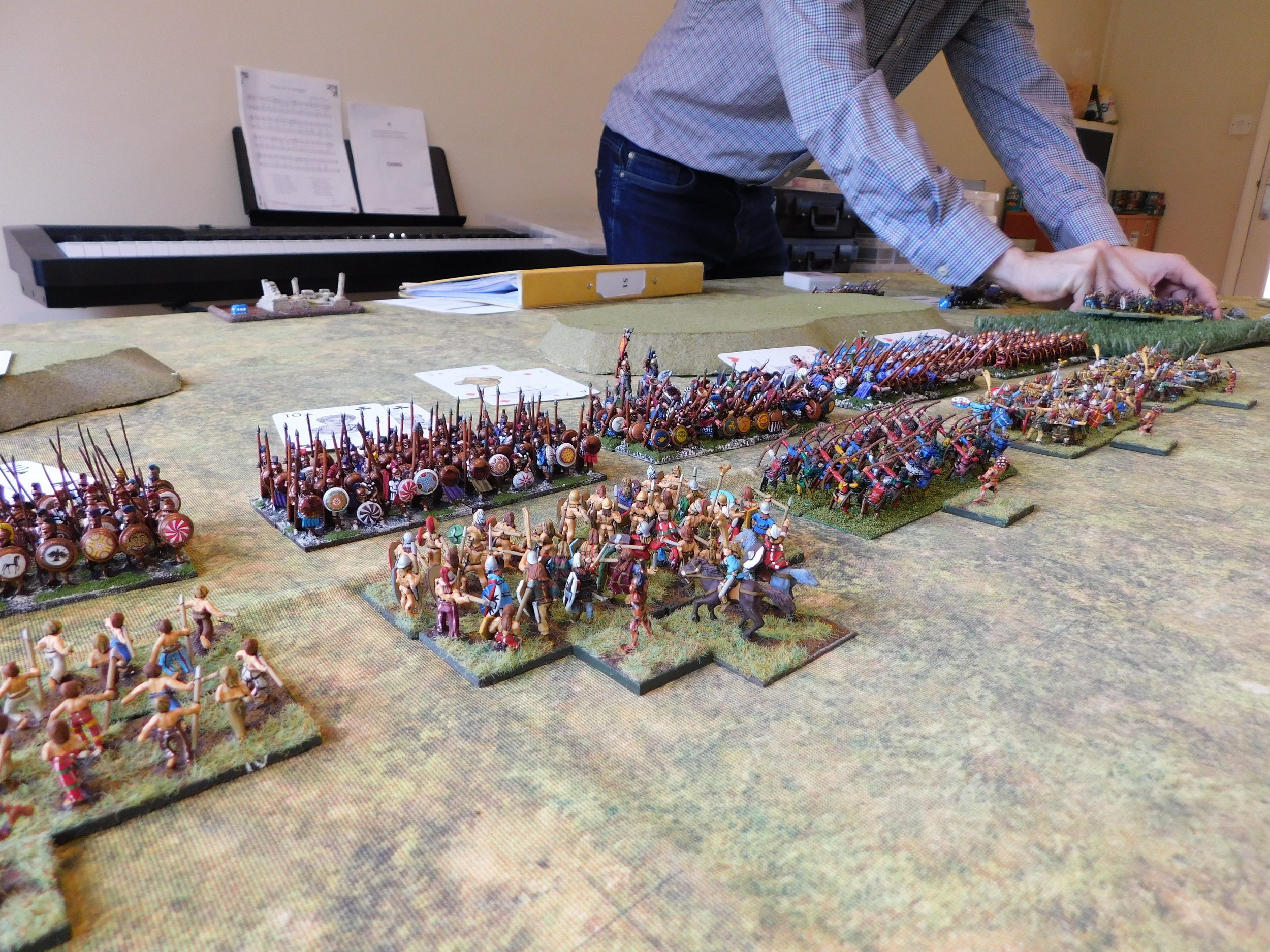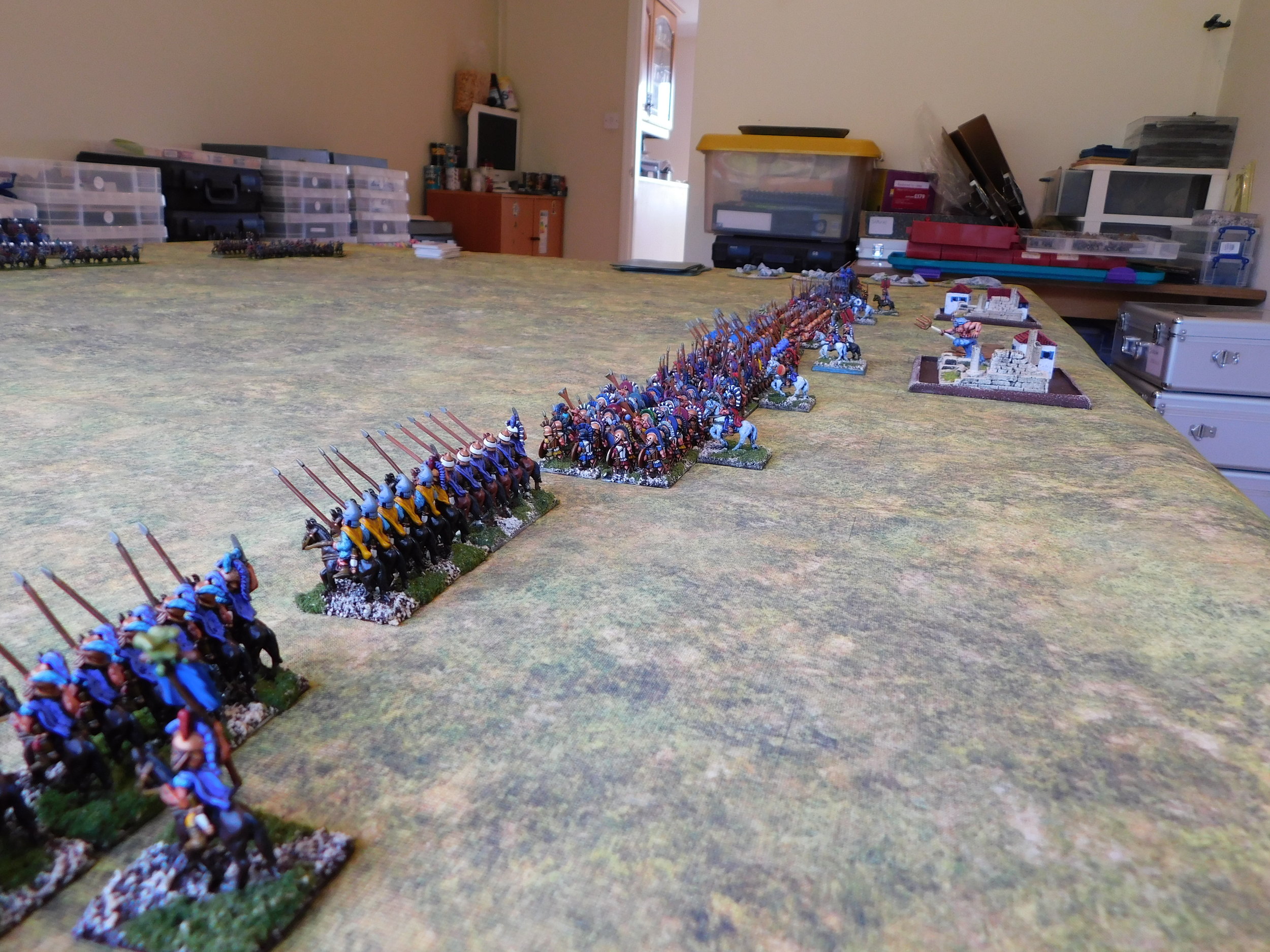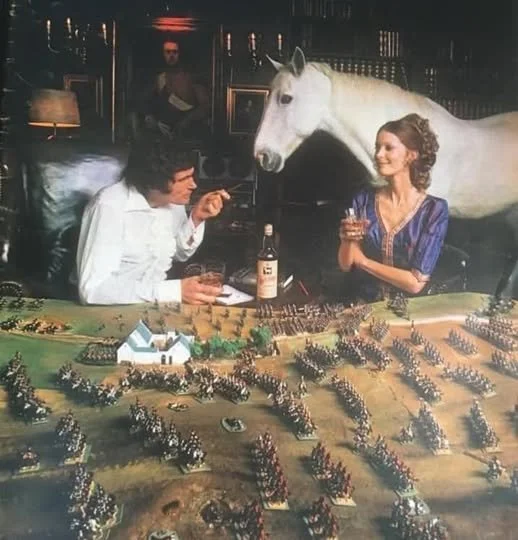TTS AAR: Britcon Game 4: Venetians vs Thessalians
/My fourth game at Britcon was a re-match of the warm-up game I’d had on the Friday evening before the tournament started: my Venetians versus Adrian’s Thessalians.
The stakes this time around, however, were much higher: we were ranked one and two in the tournament so far, so whoever won this game would end up perfectly placed to take the title. It would be fair to say that I was a little nervous about this one: my Venetians had been hammered on the Friday night (as in soundly beaten not drunk as a lord!) and I couldn’t afford to let that happen again.
The Thessalians were another largely infantry army, and I’d beaten three of them already during the competition by sending my Knights around one or both flanks. Adrian, however, was far too canny to give me the opportunity to do that: his men were deployed to cover just about the entire width of the table, so no room around the sides!
His left flank, however, did look a bit weaker than his right and centre (where those nasty veteran Hoplites were waiting) so if I couldn’t go around a flank, I determined to punch through it using my larger command of Knights. First off, however, I had to deal with Adrian’s cavalry there, who were attempting to do to me what I’d done to others!
In the meantime, I kept my main line rigidly under control, just advancing far enough forward to give me a little retreating space should I need it.
Things continued to go well on my right: the Thessalian cavalry were disposed off (either routing or retreating off table) and, more importantly, two of my Knights units were now free to crash right the way through to the enemy base line.
Meanwhile battle had been joined in the centre, with the combination of Alabardiers and Picchieri proving more than a match for the Thessalian Hoplites, with the threat of a single unit of Knights enough to keep Adrian’s right wing forces at bay.
The Knights on the right finally properly broke through, with one unit heading for and taking the enemy camp (despite the best efforts of some pesky enemy light infantry) and the other crashing into the rear of the Thessalian reserve.
The game should have ended here in a Venetian victory but, unfortunately, I had made a mistake on my right flank: I had positioned my Knights and Lights there to keep the enemy light cavalry that had retreated off table from coming back onto the board, but forgot what they were there for and decided to “get my Lights back into the battle”. This let Adrian bring his light cavalry back onto the table, meaning that when his camp fell, he had one coin left rather than none.
How annoying!
The writing was, however, on the wall, and it was only a matter of time before I managed to get the extra coin I needed to win the game, but it was a pain in the backside and could have let Adrian back into the match.
Fortunately I managed to take the final coin needed before his Hoplites could relieve his camp: a 188-23 victory for the Venetians.



























